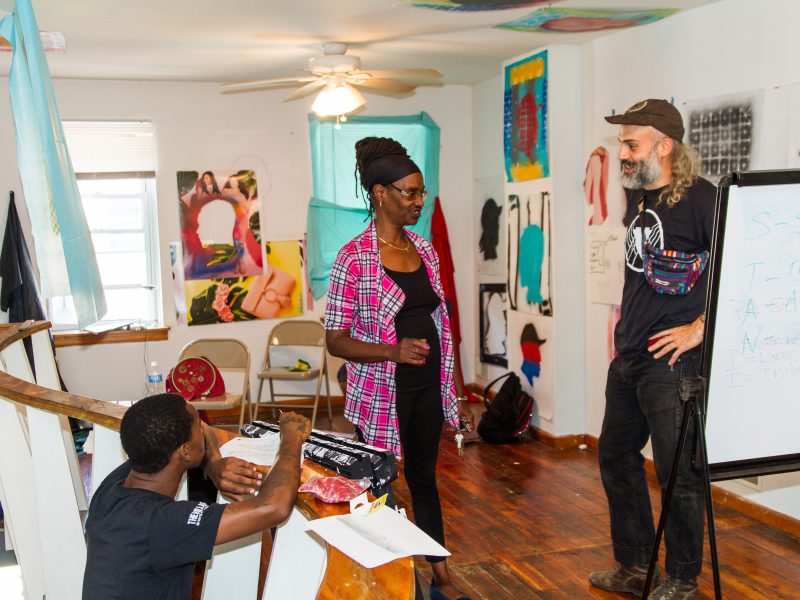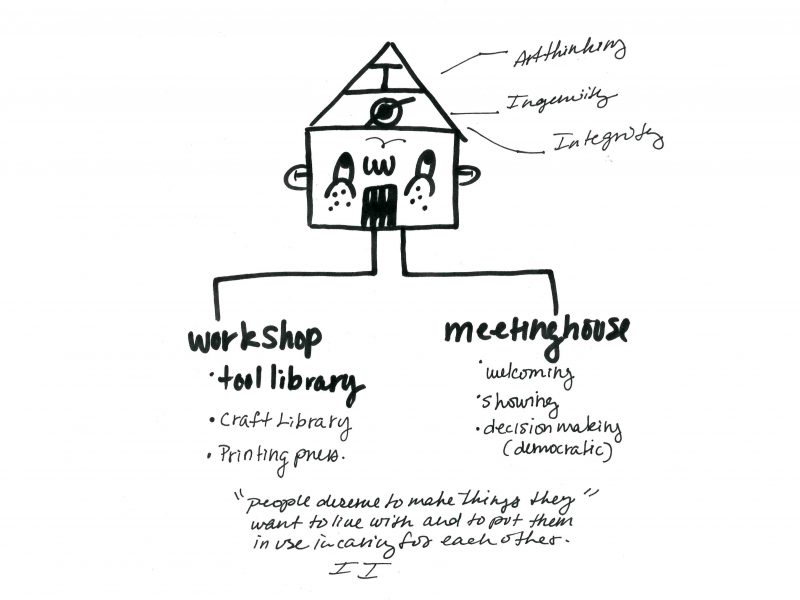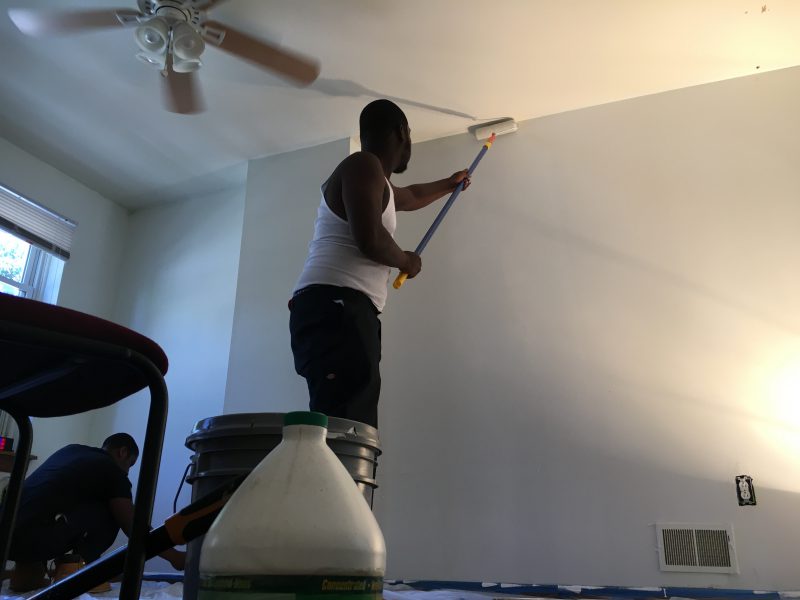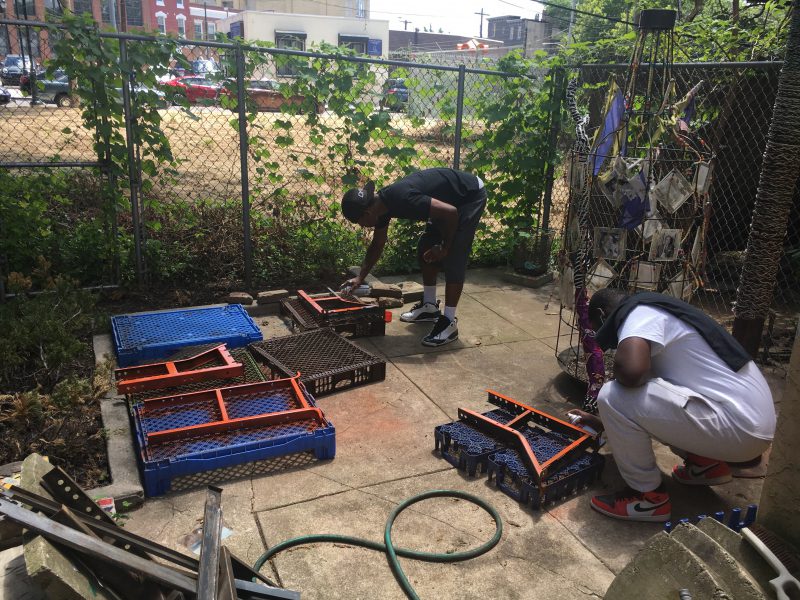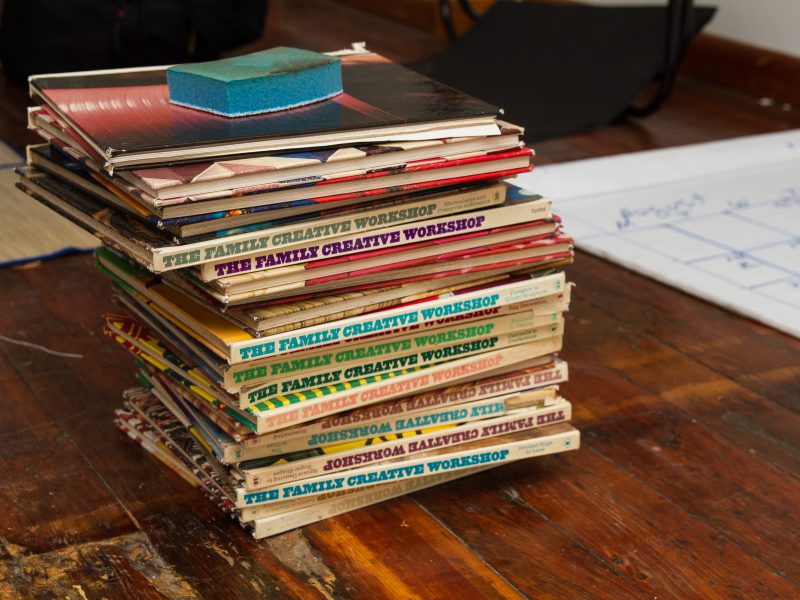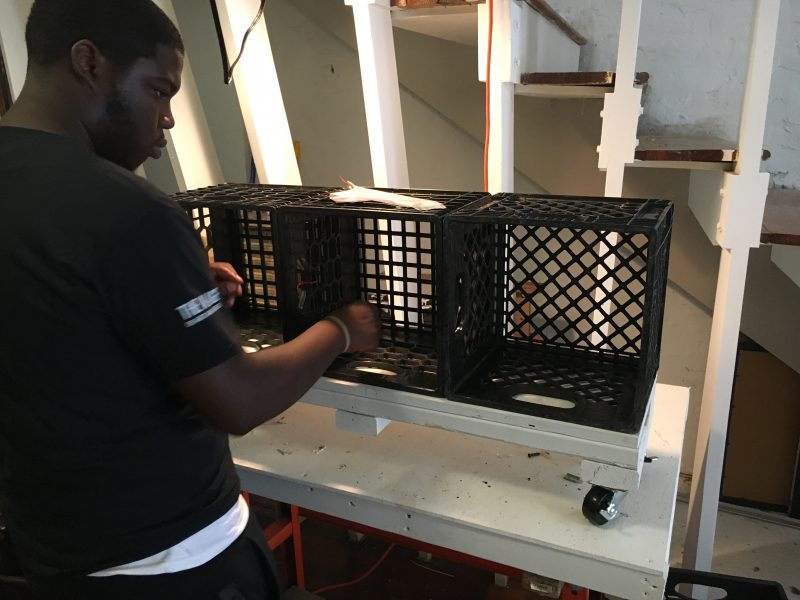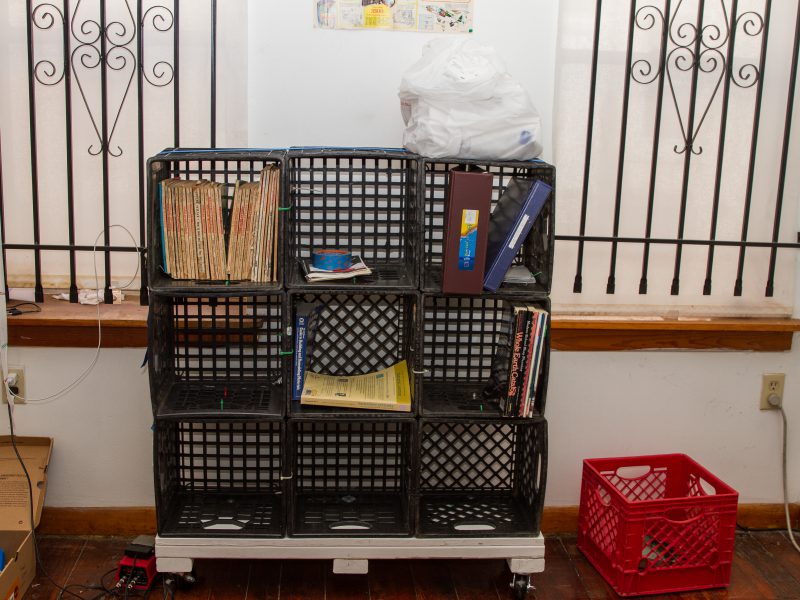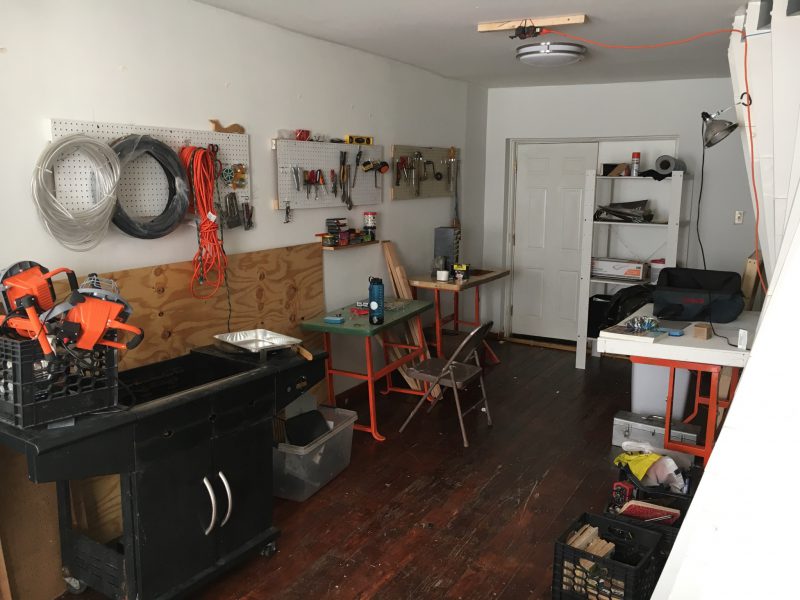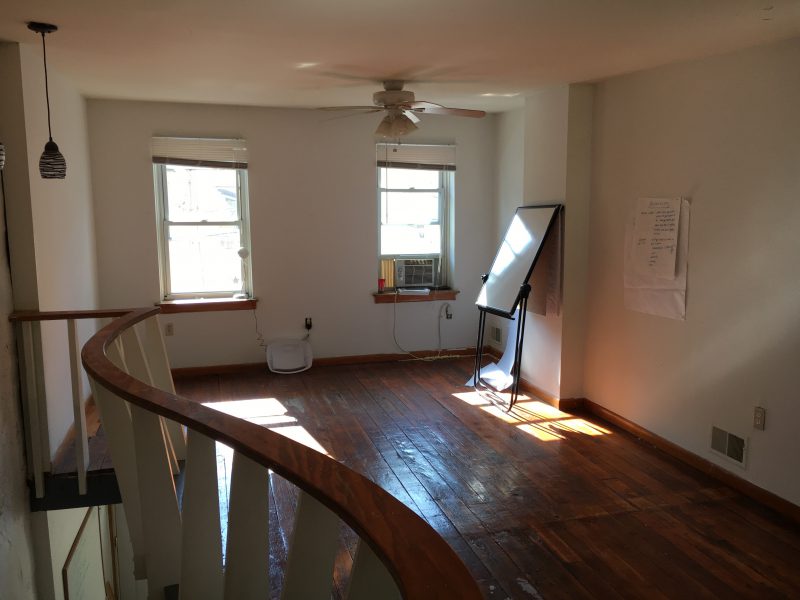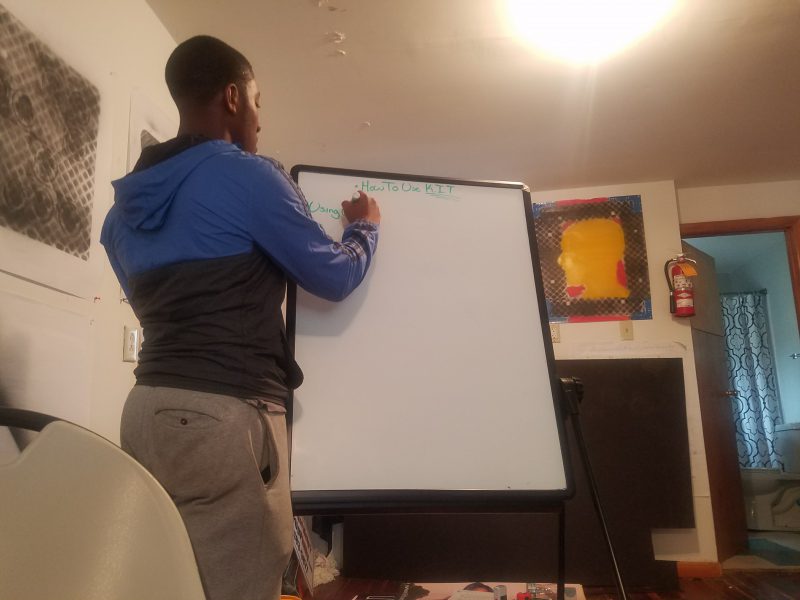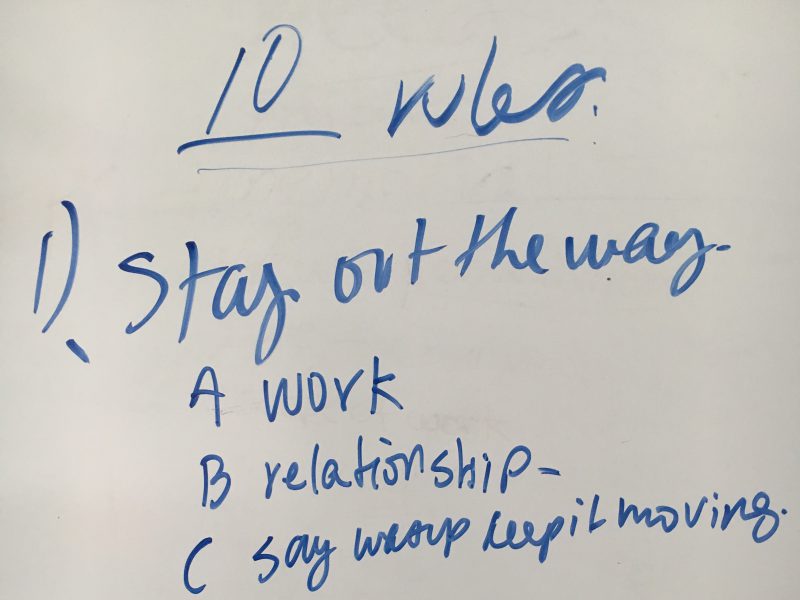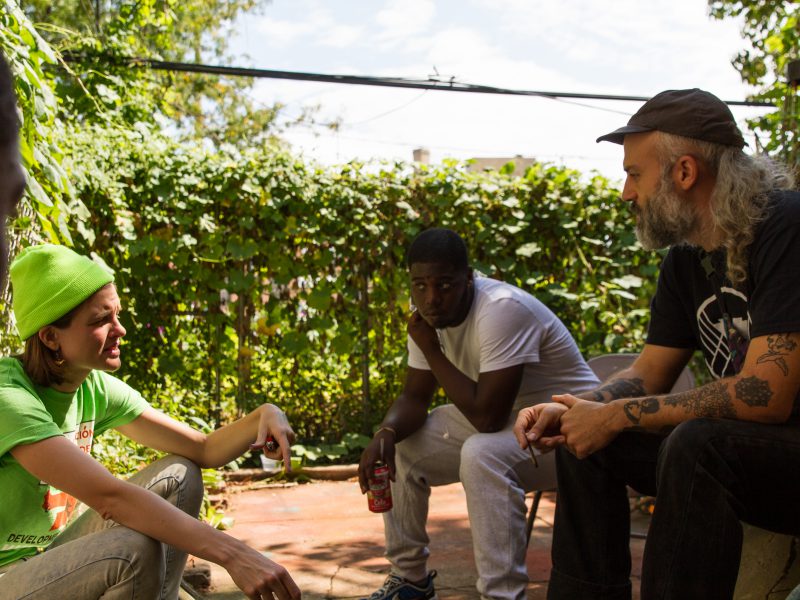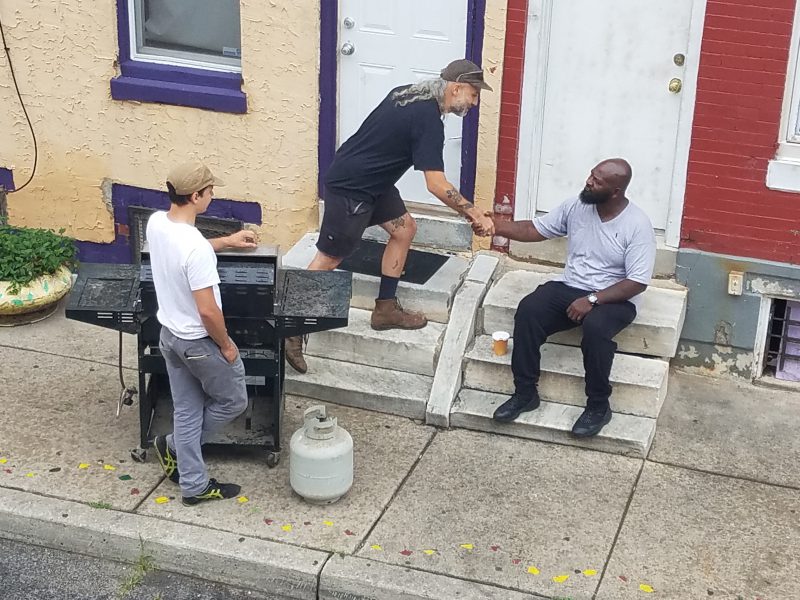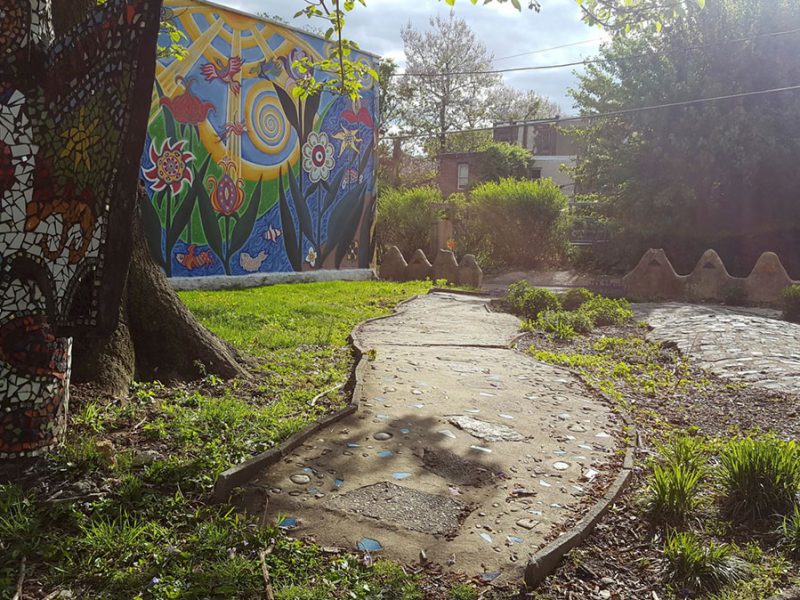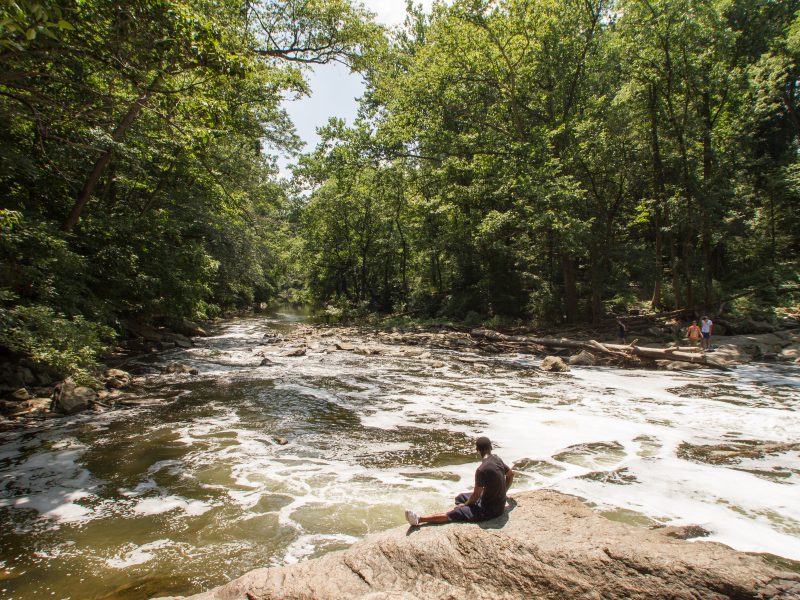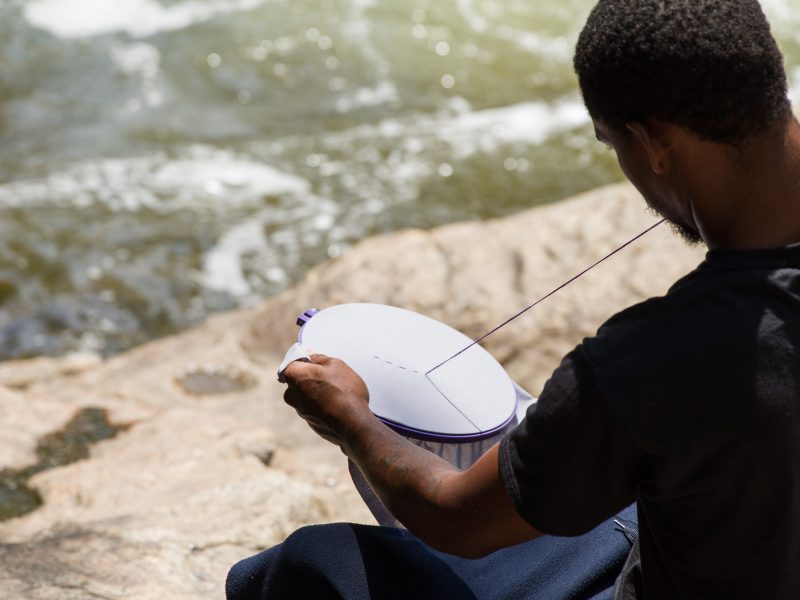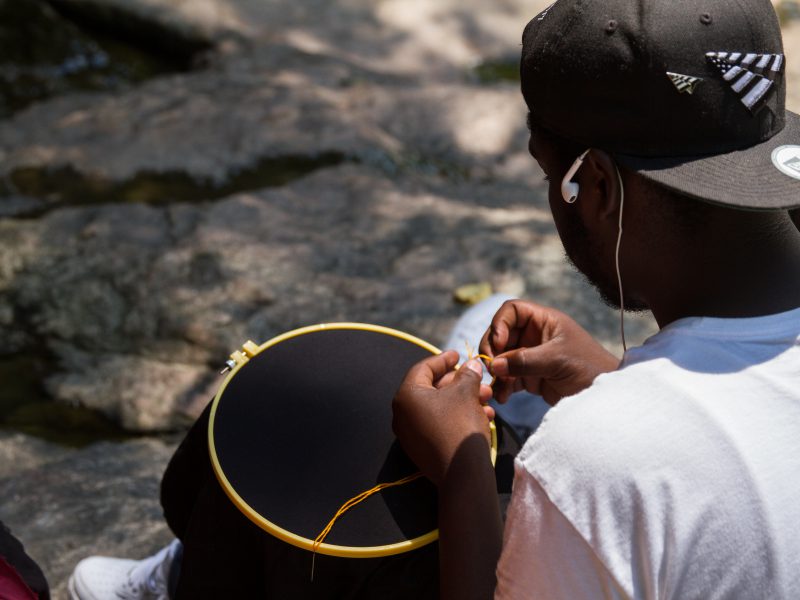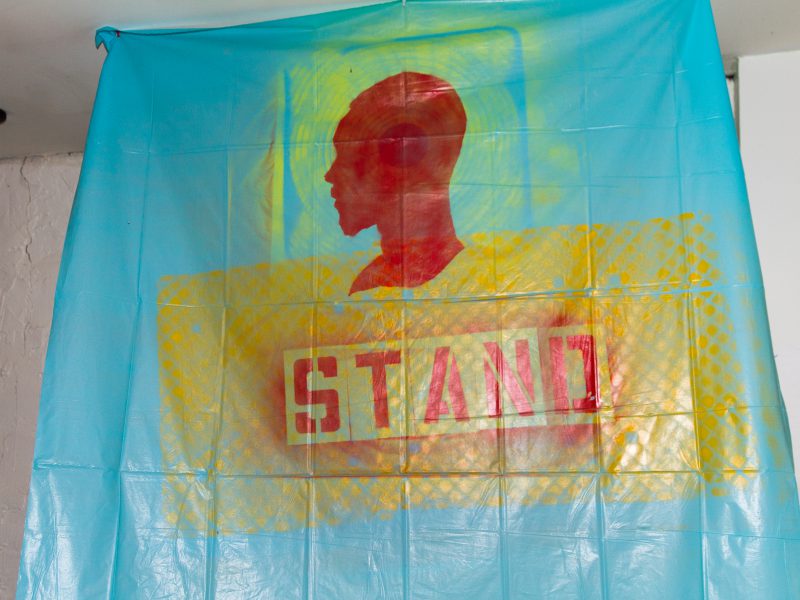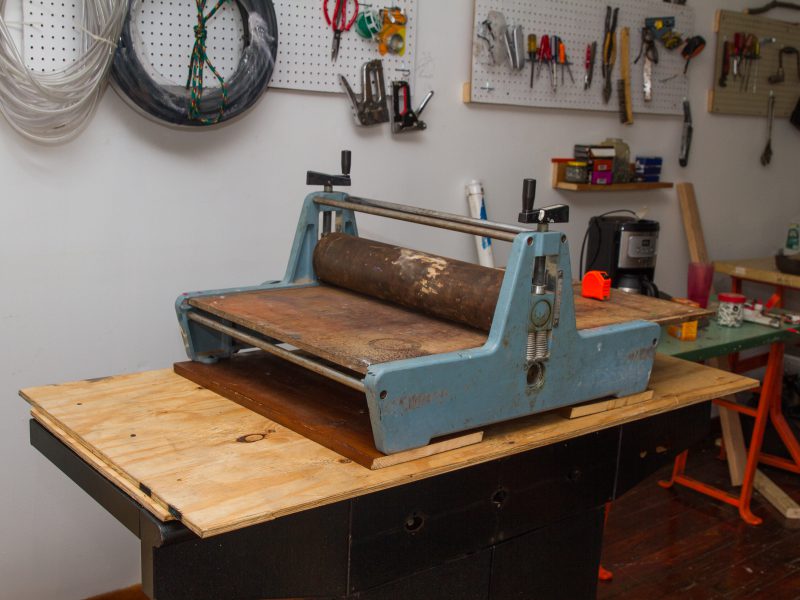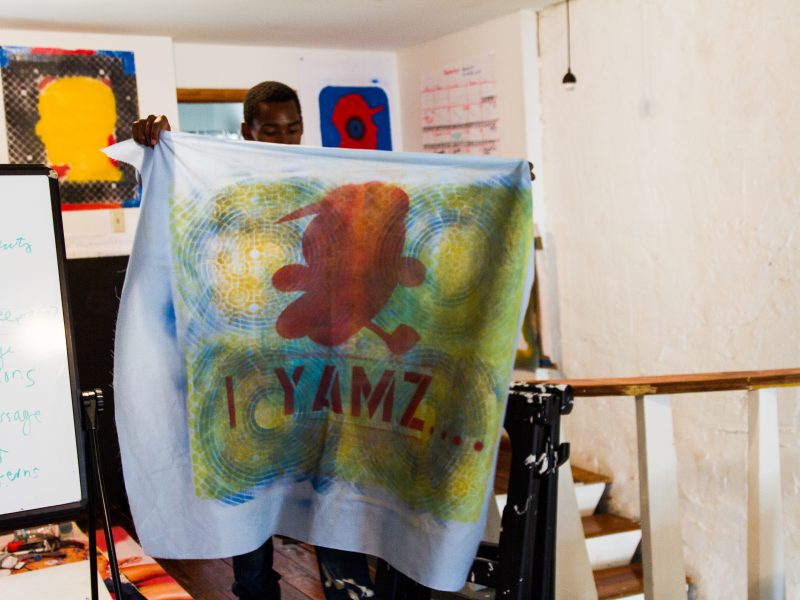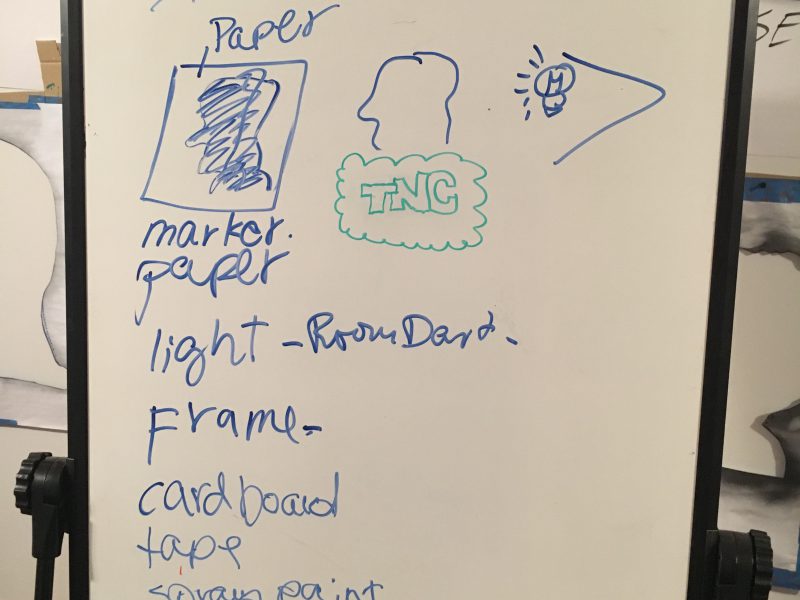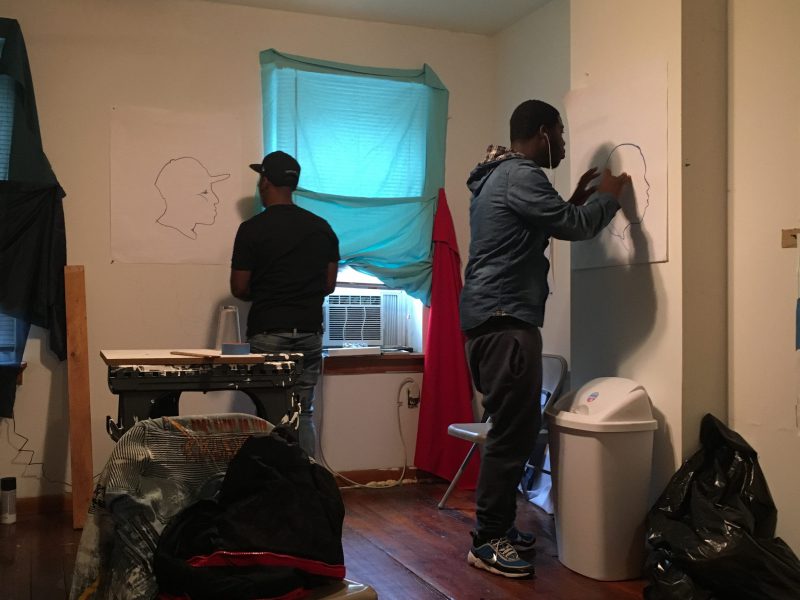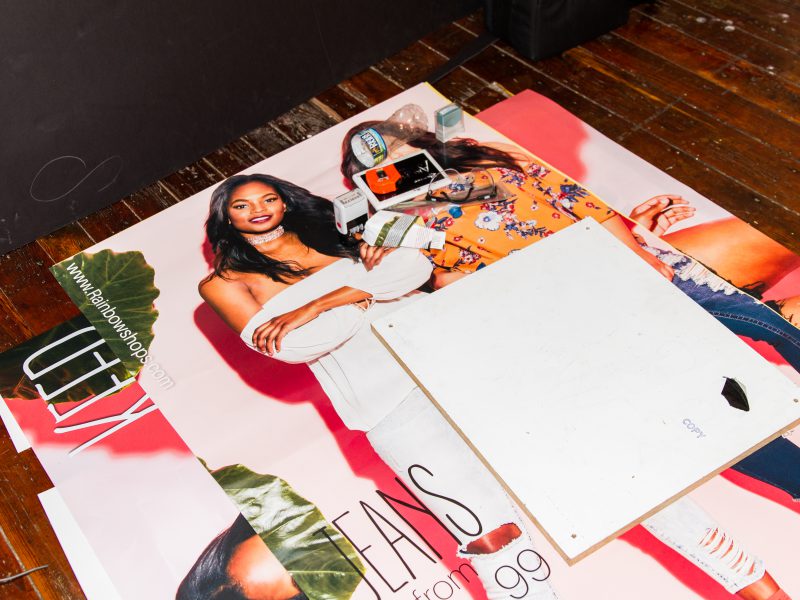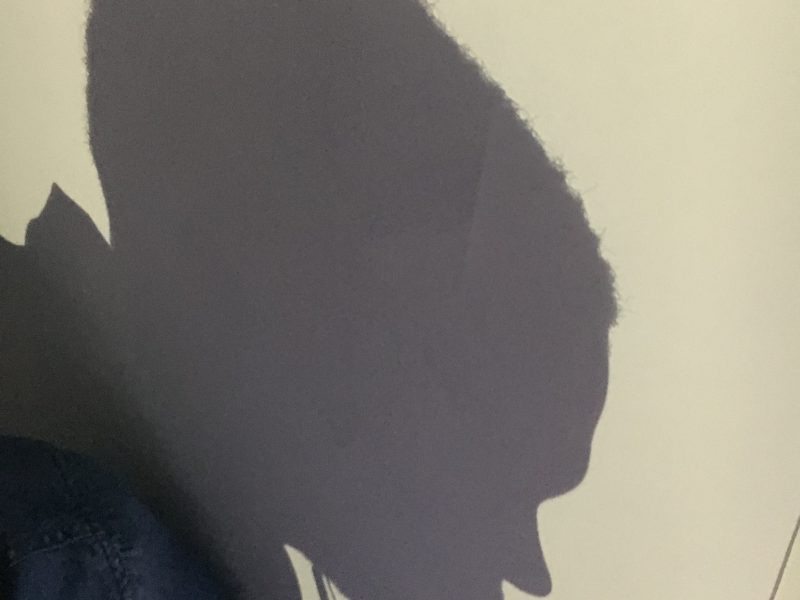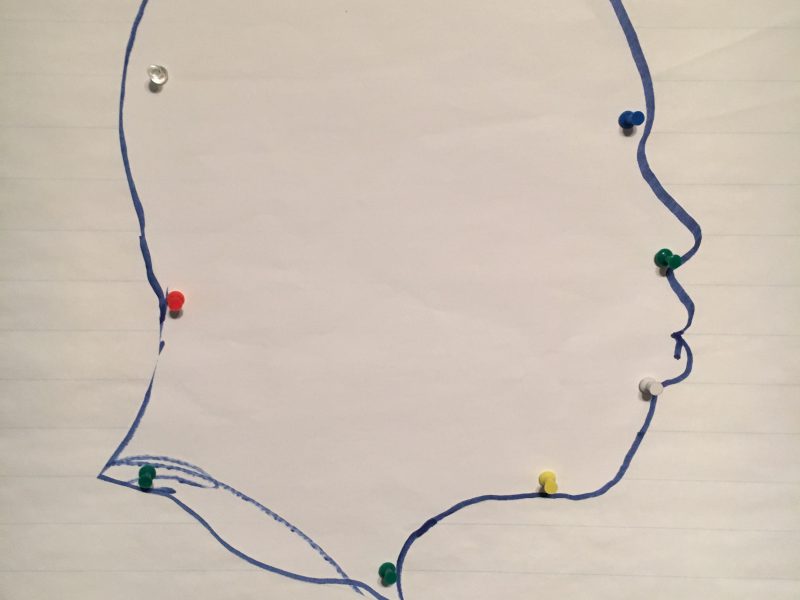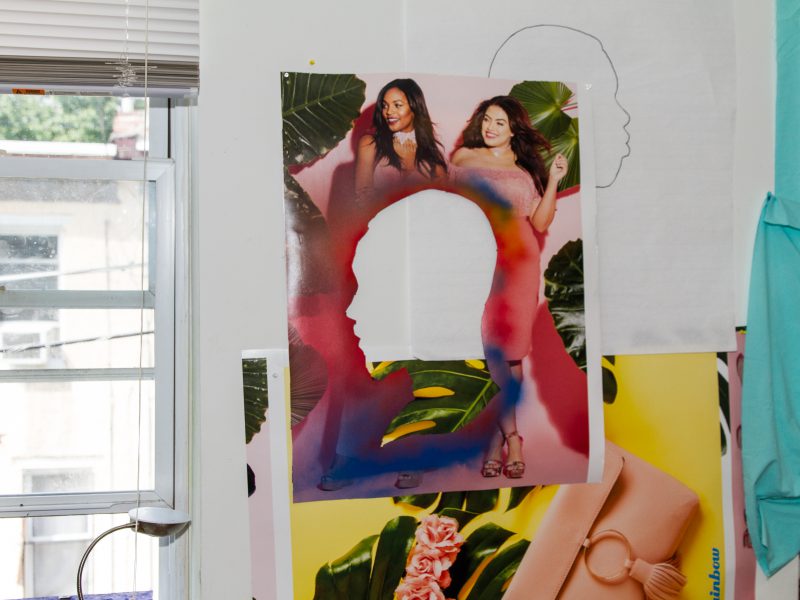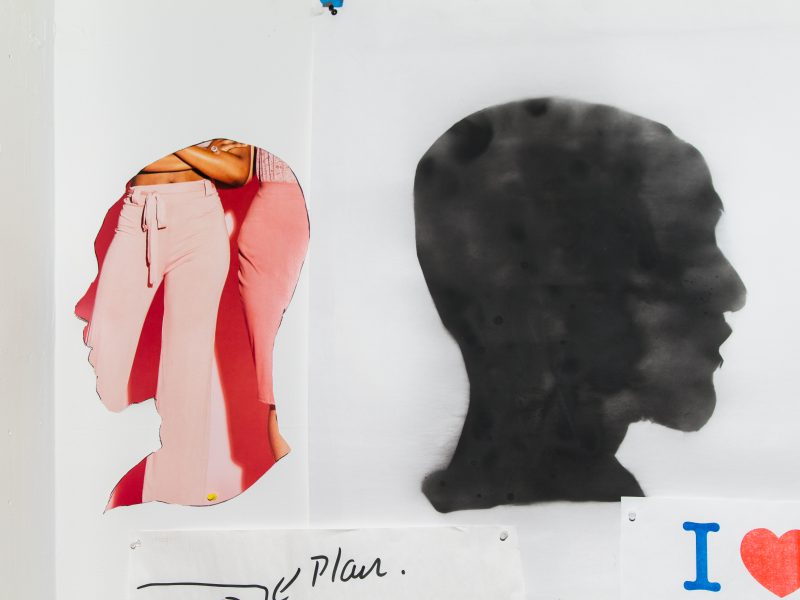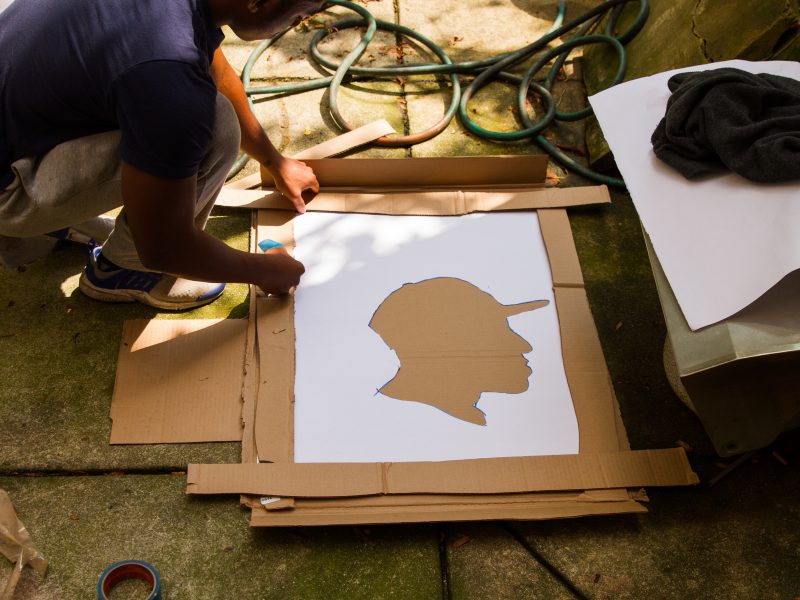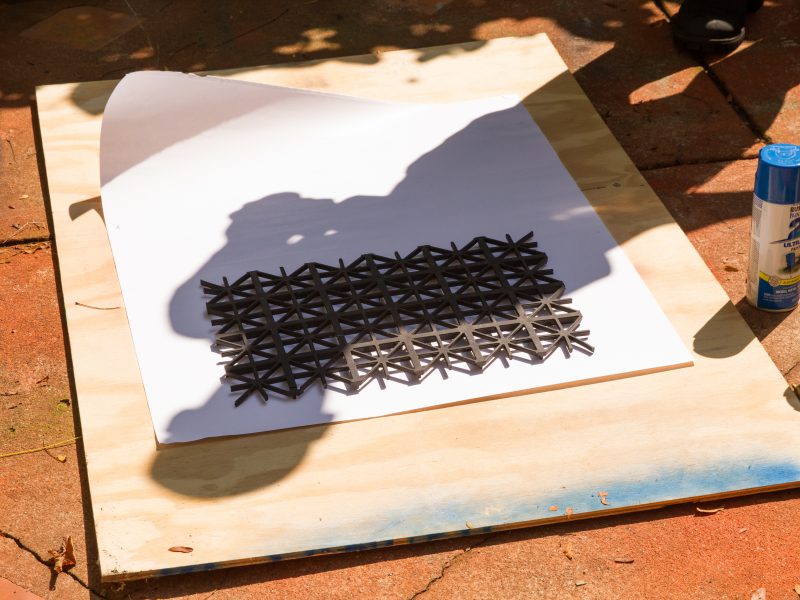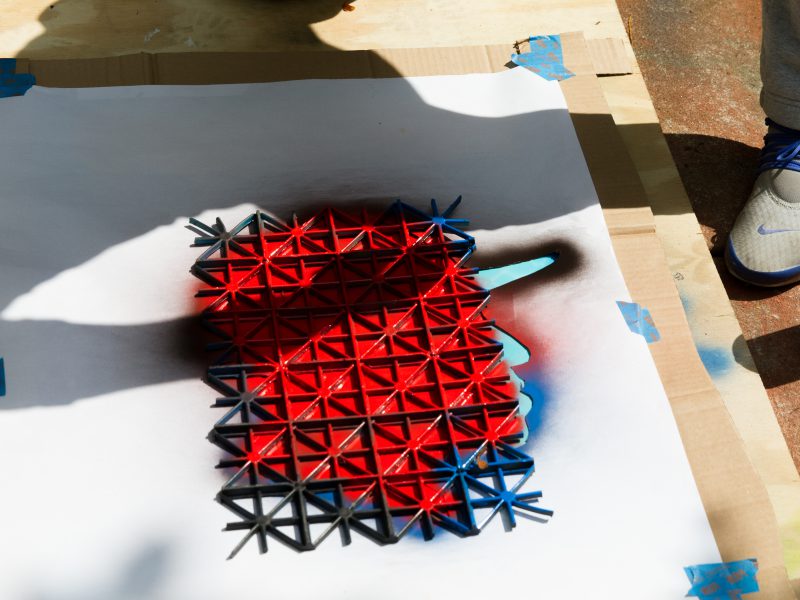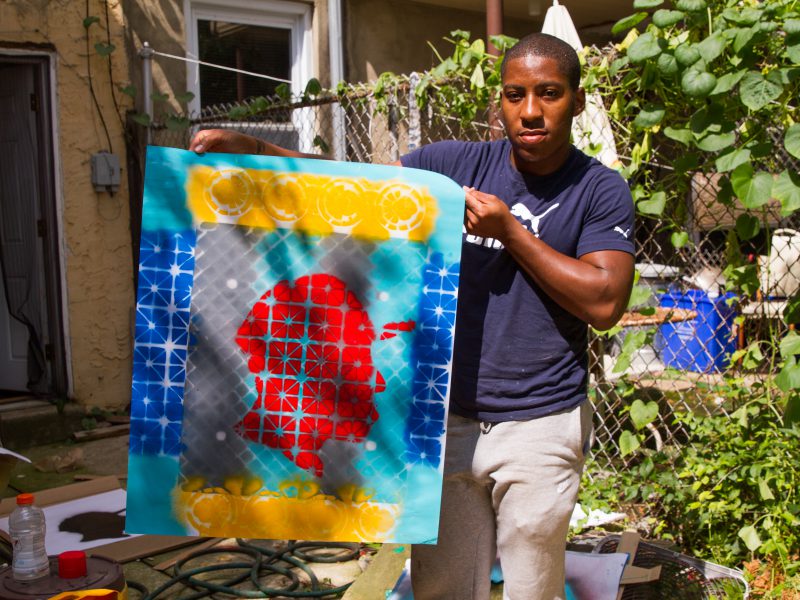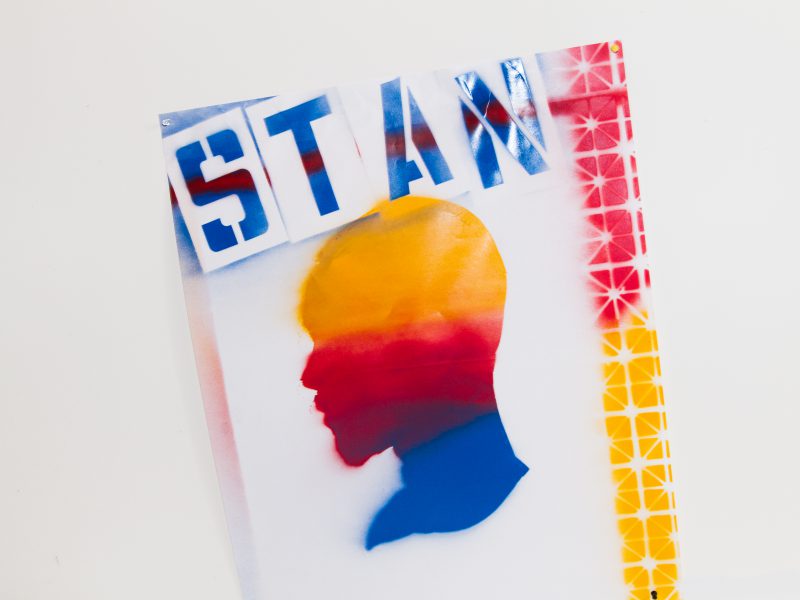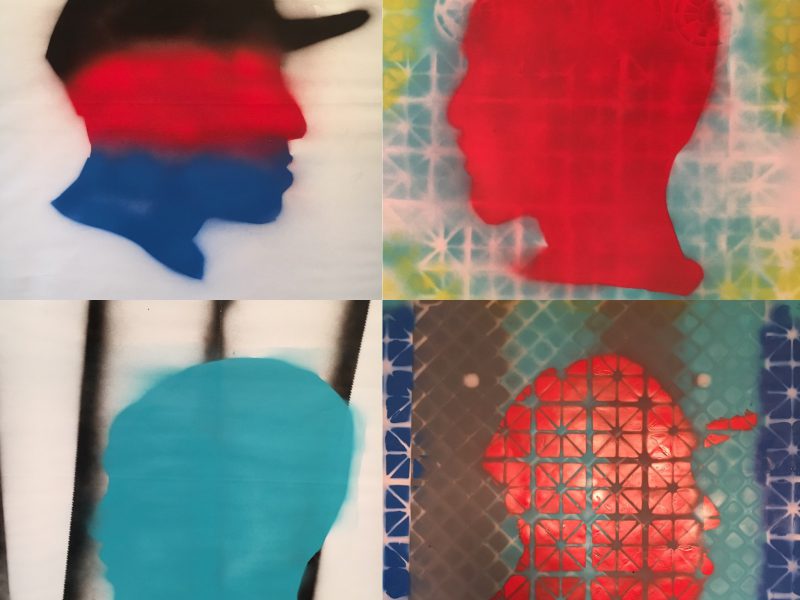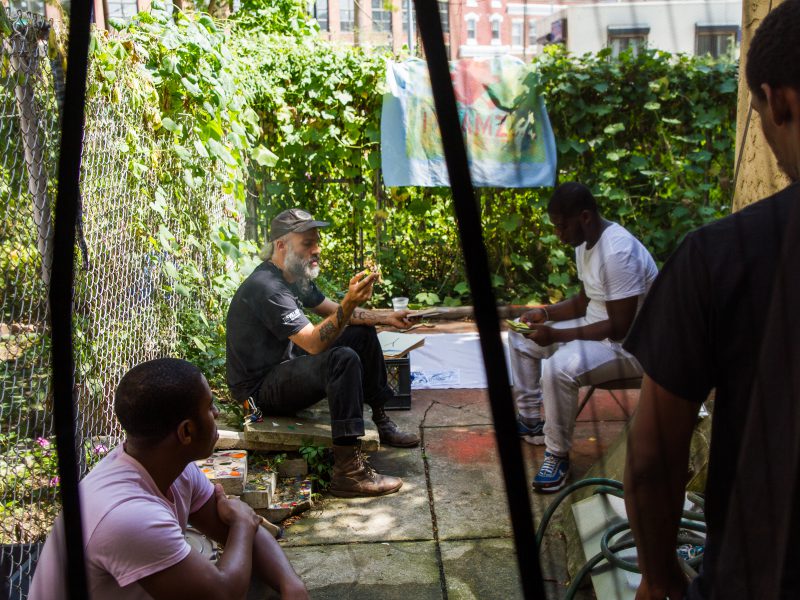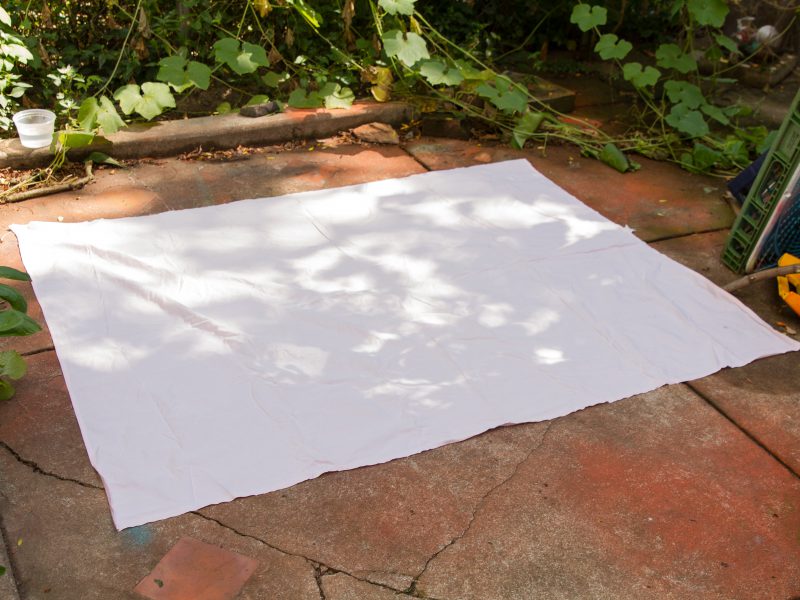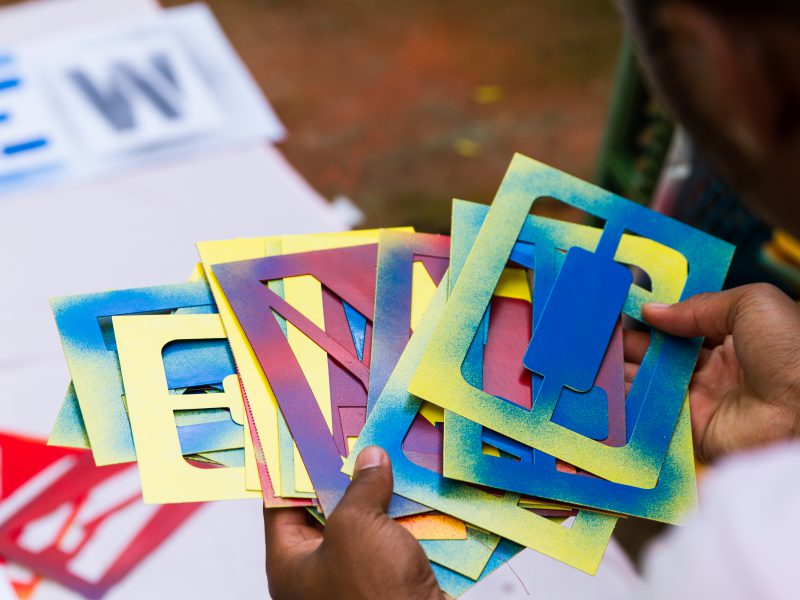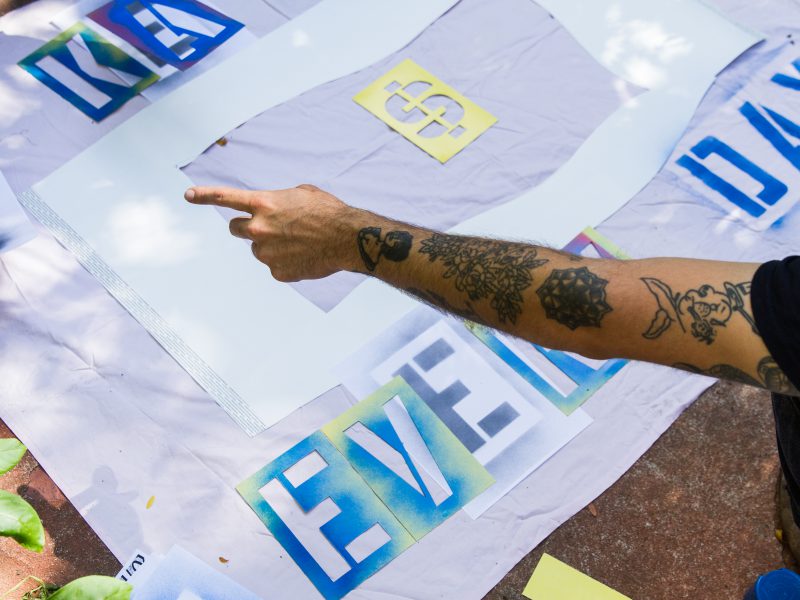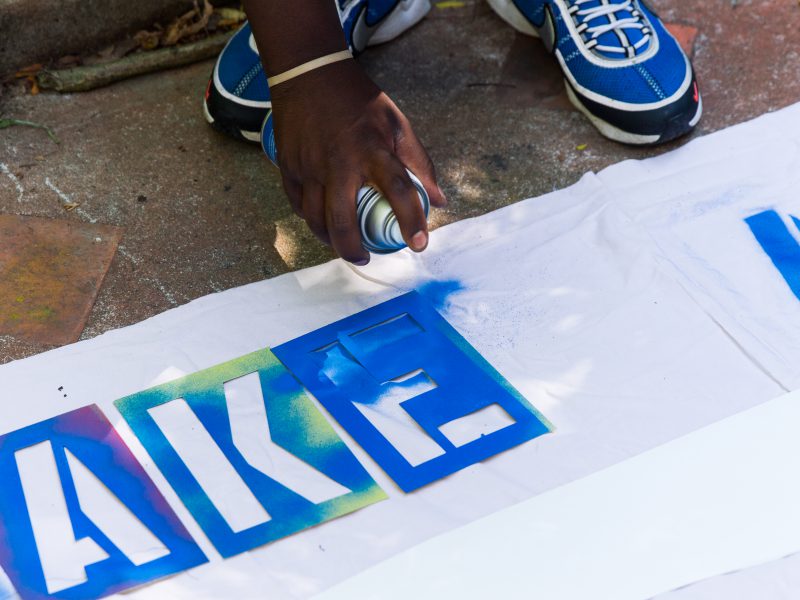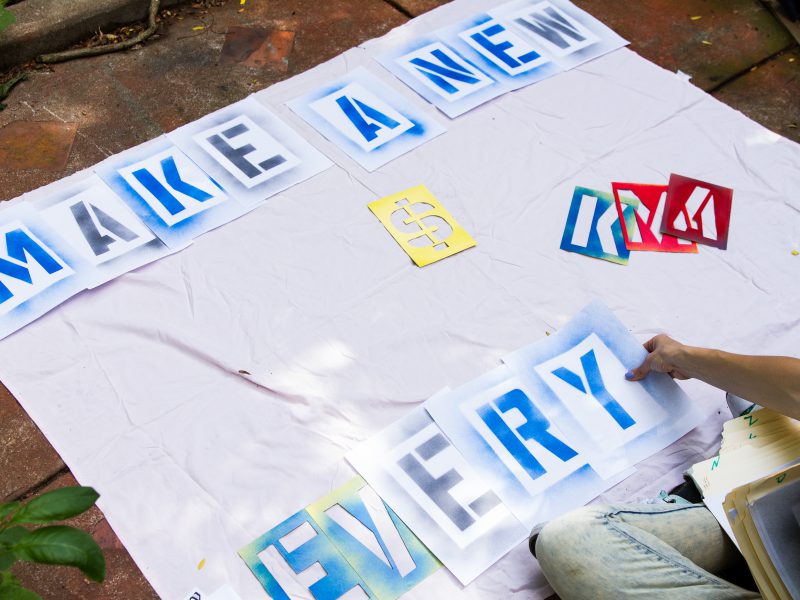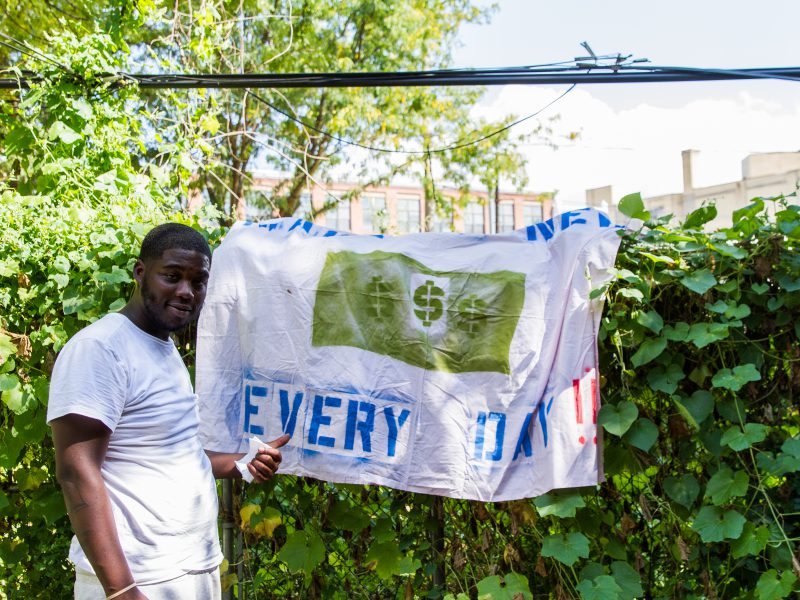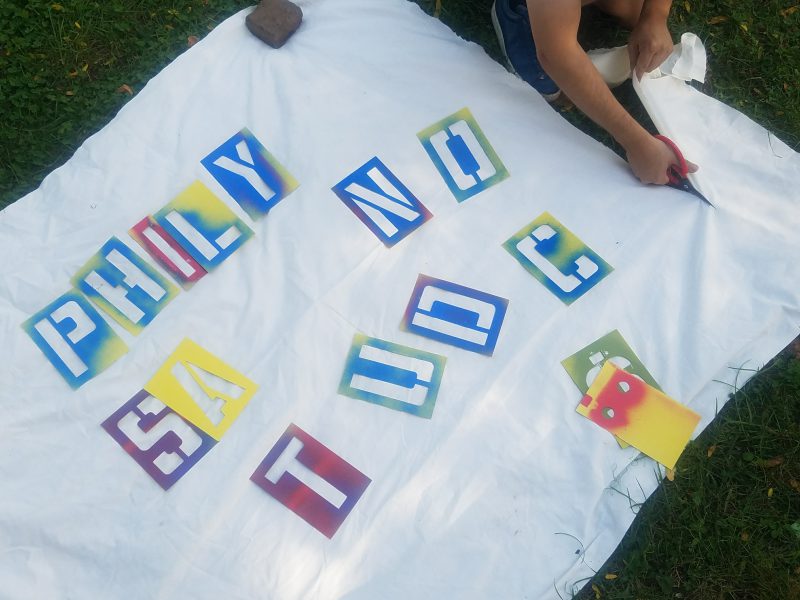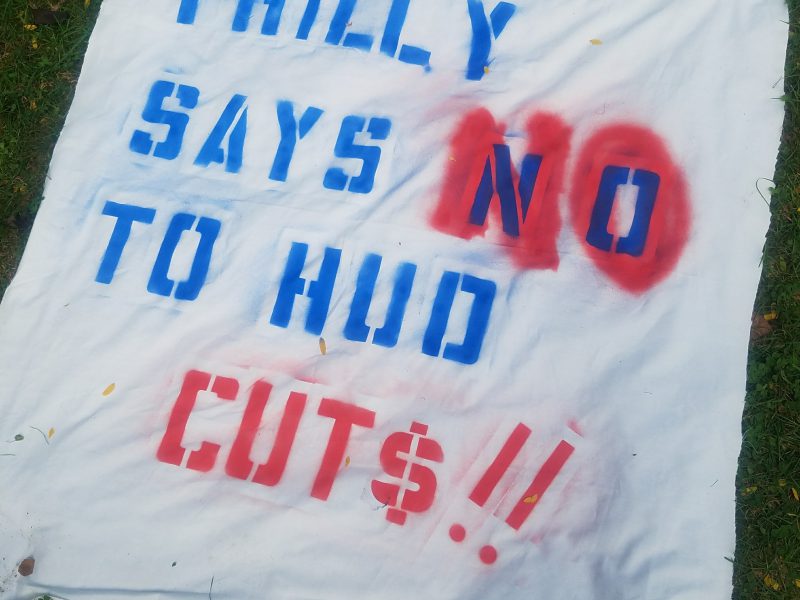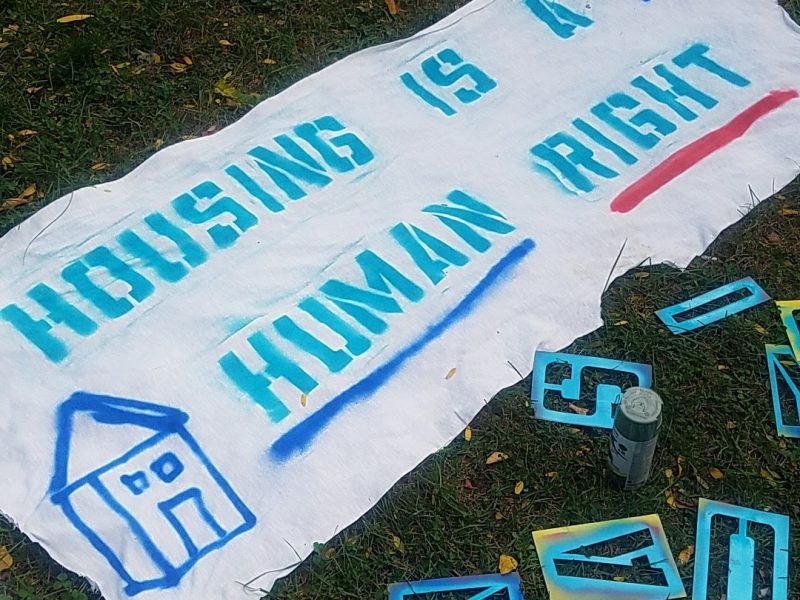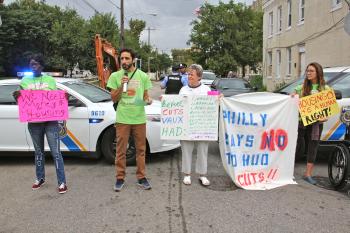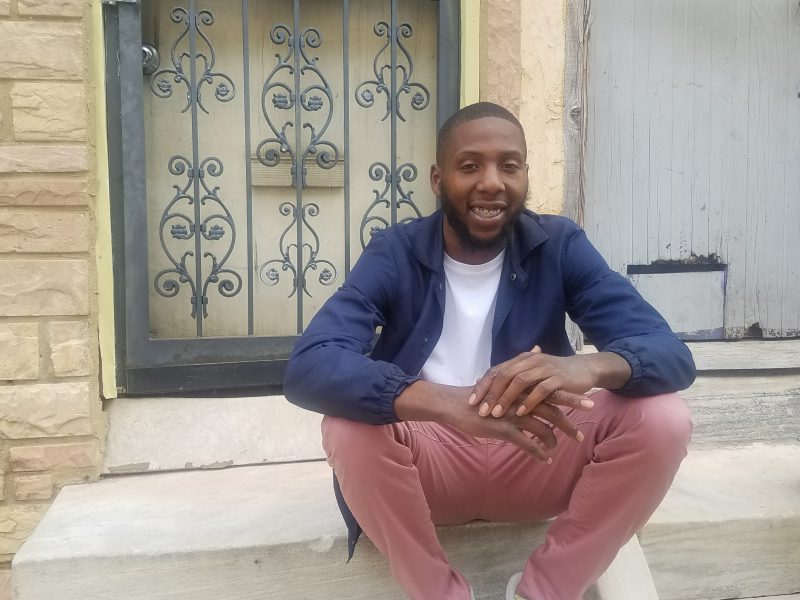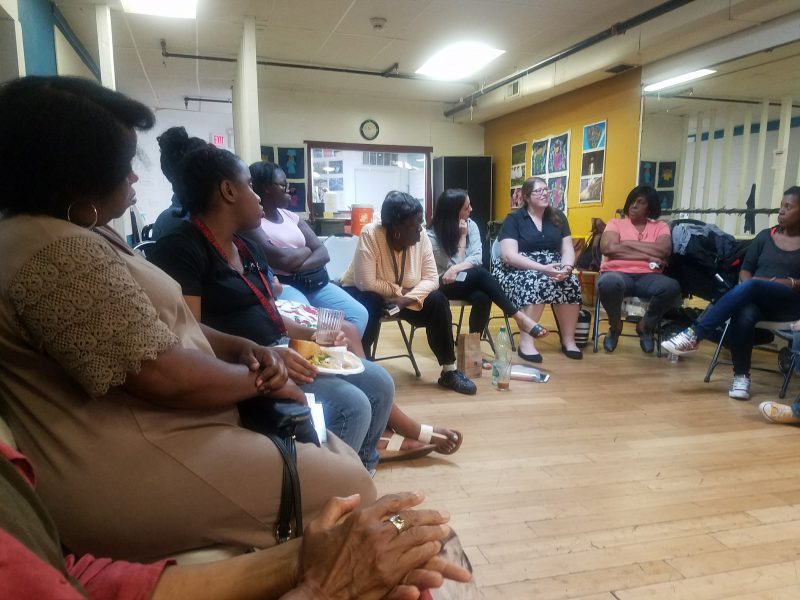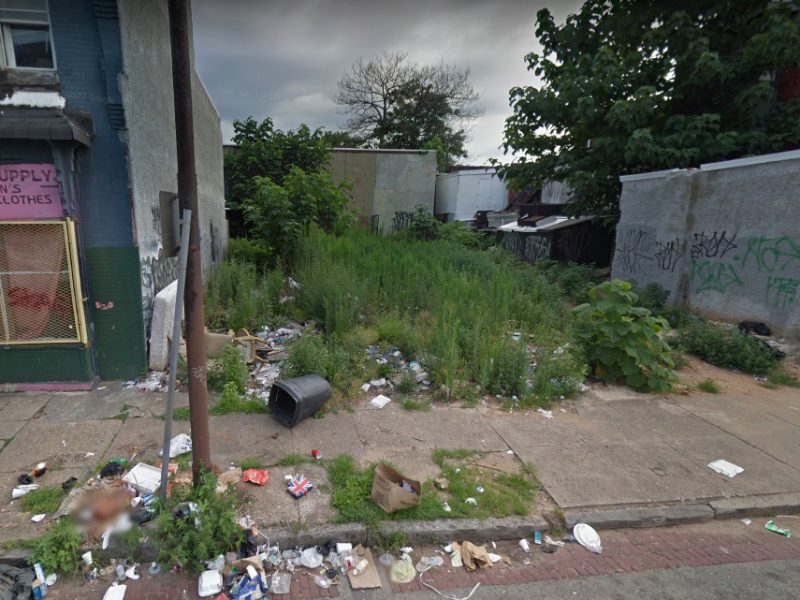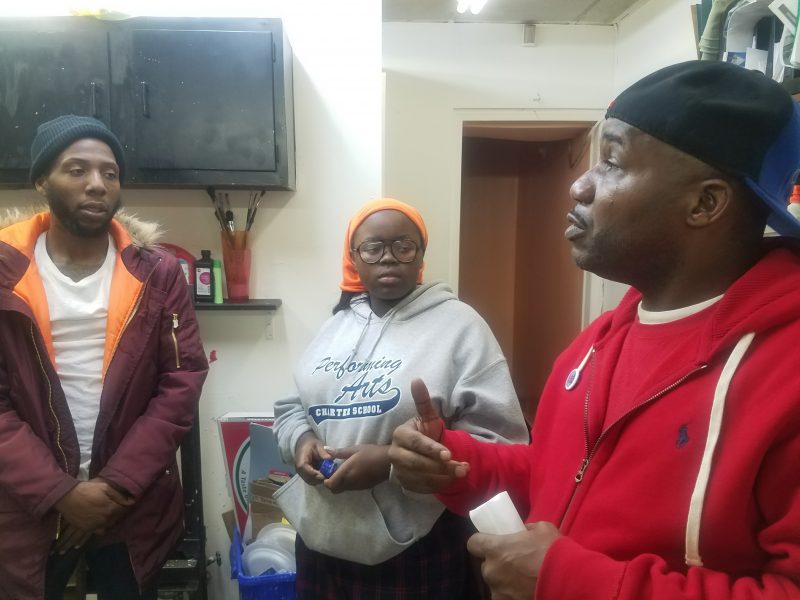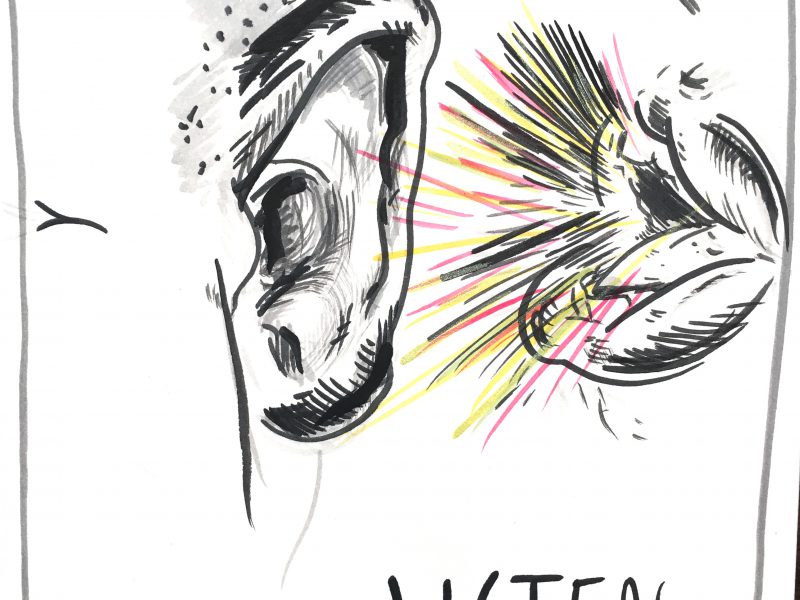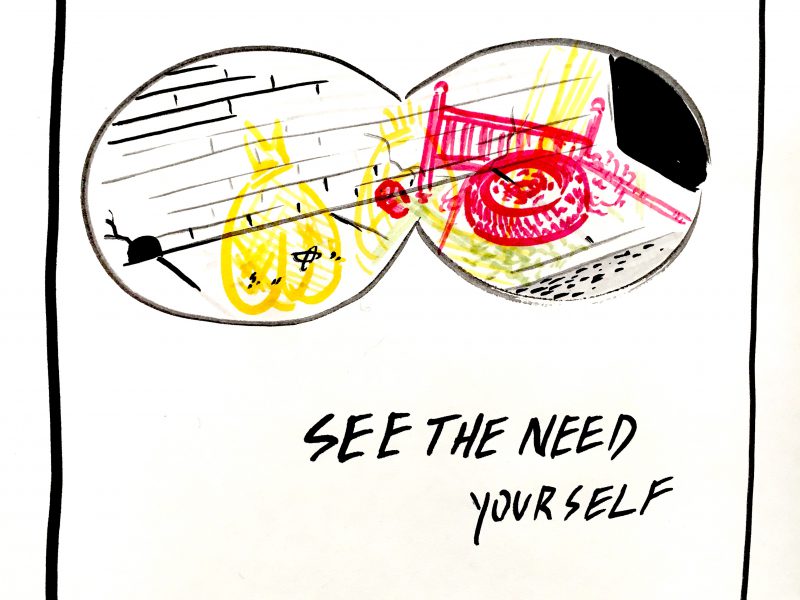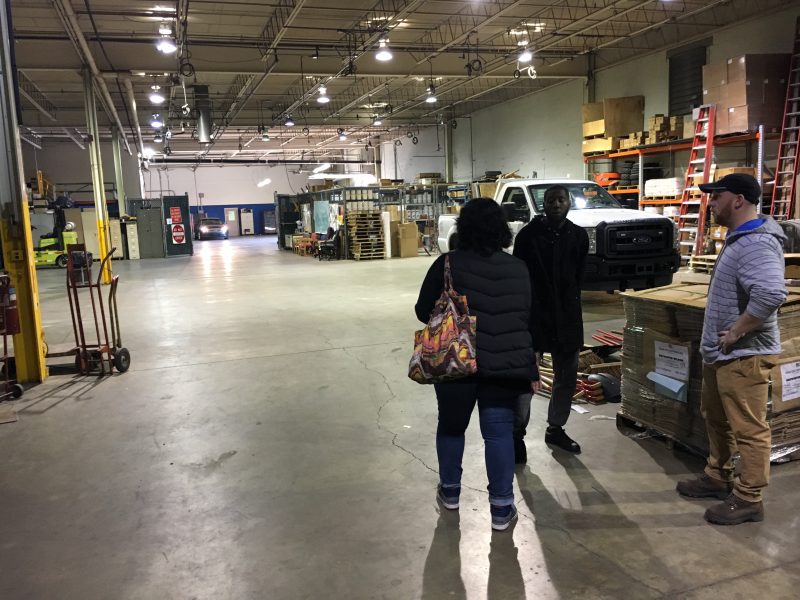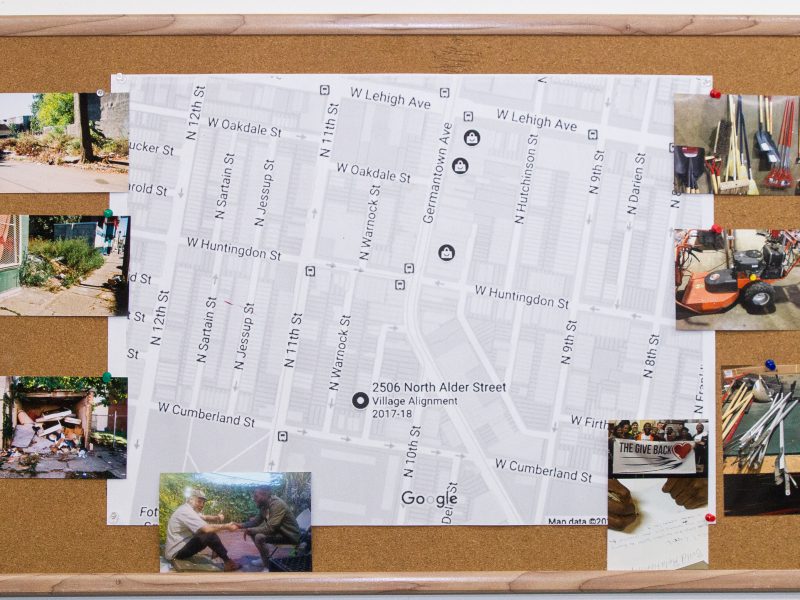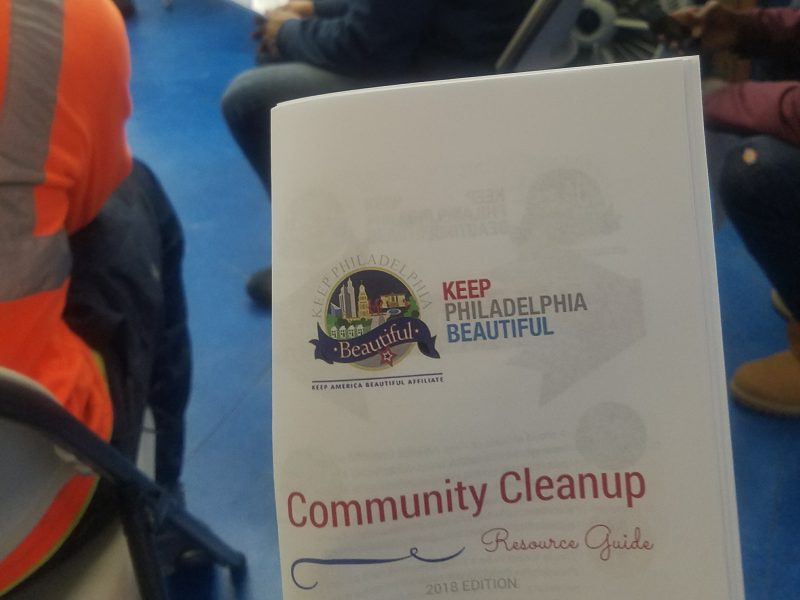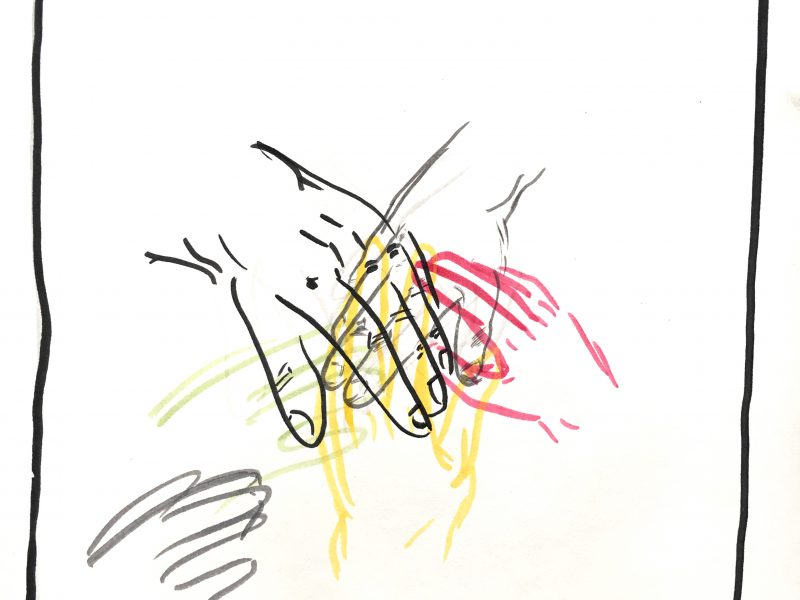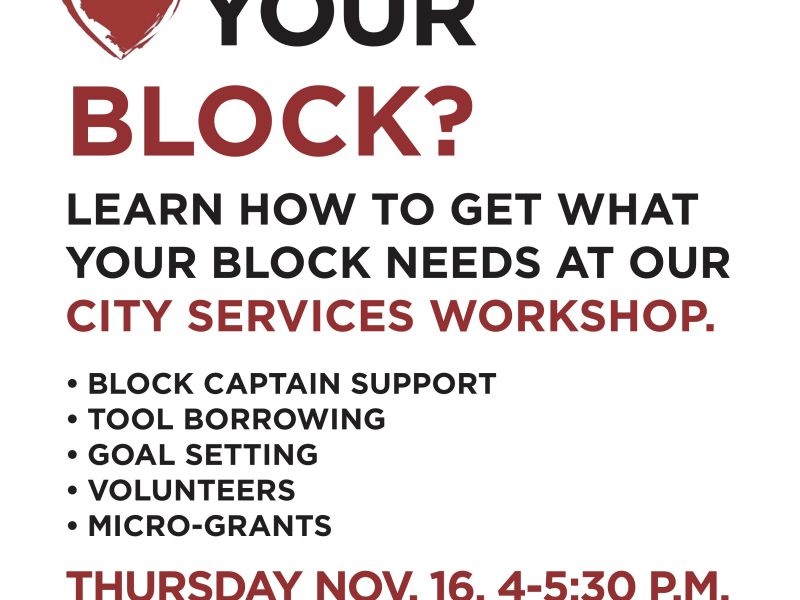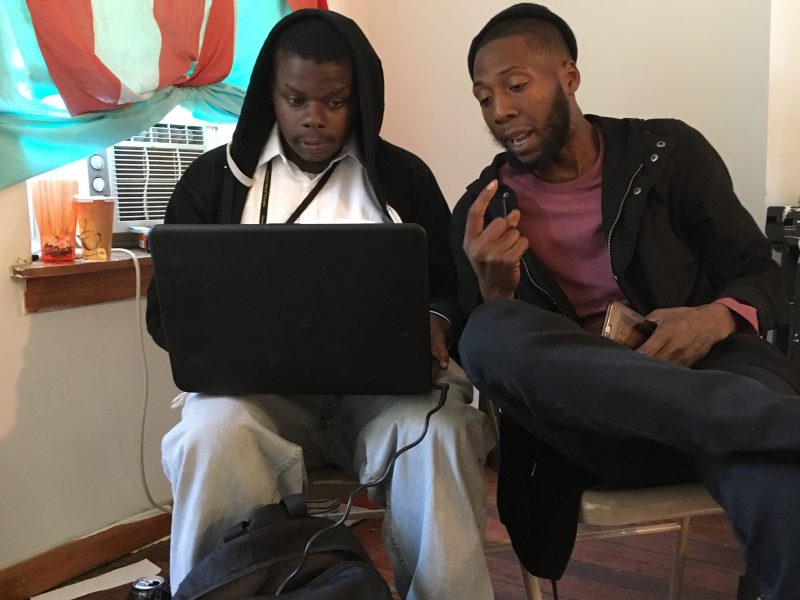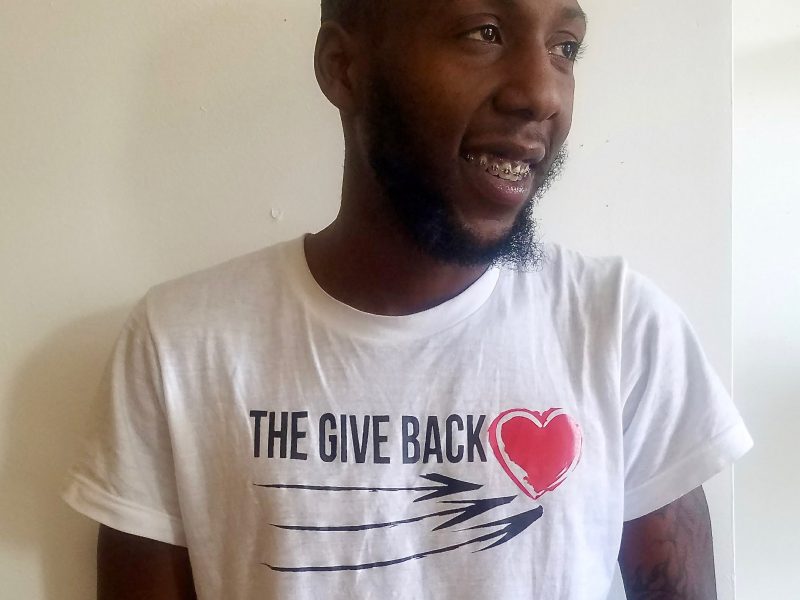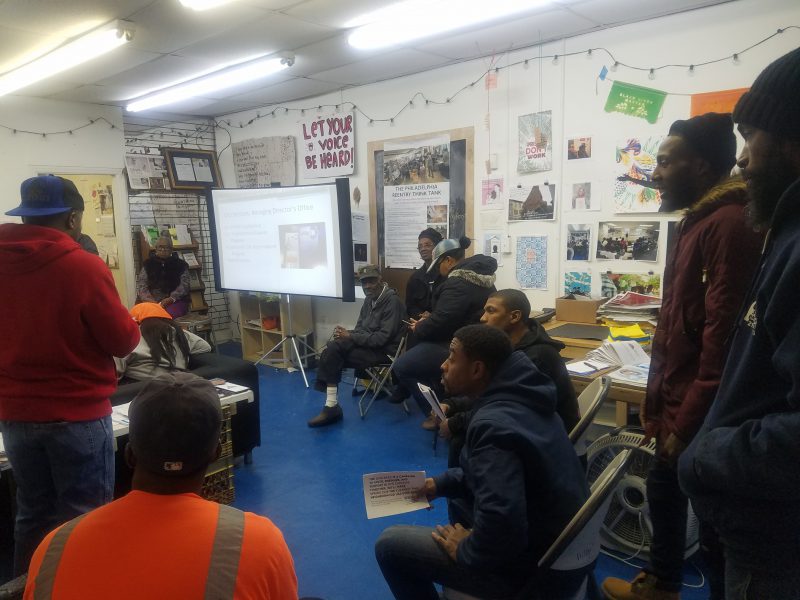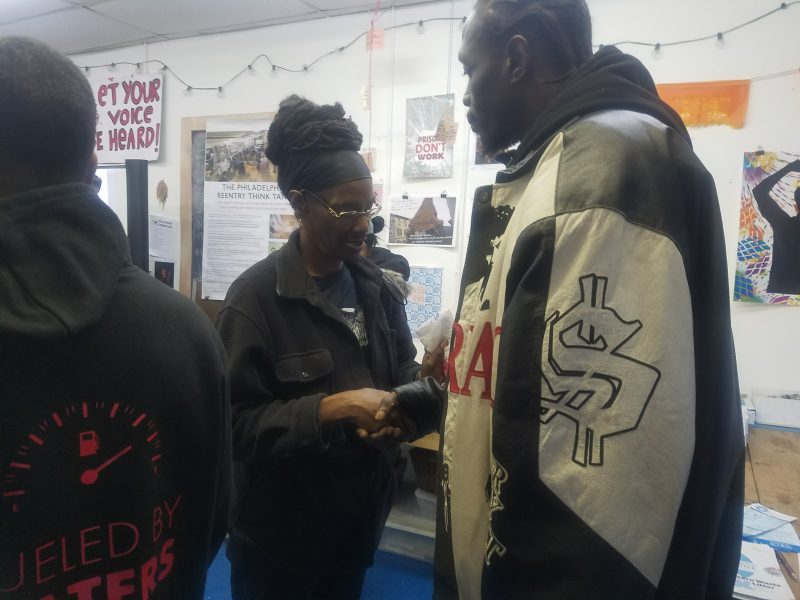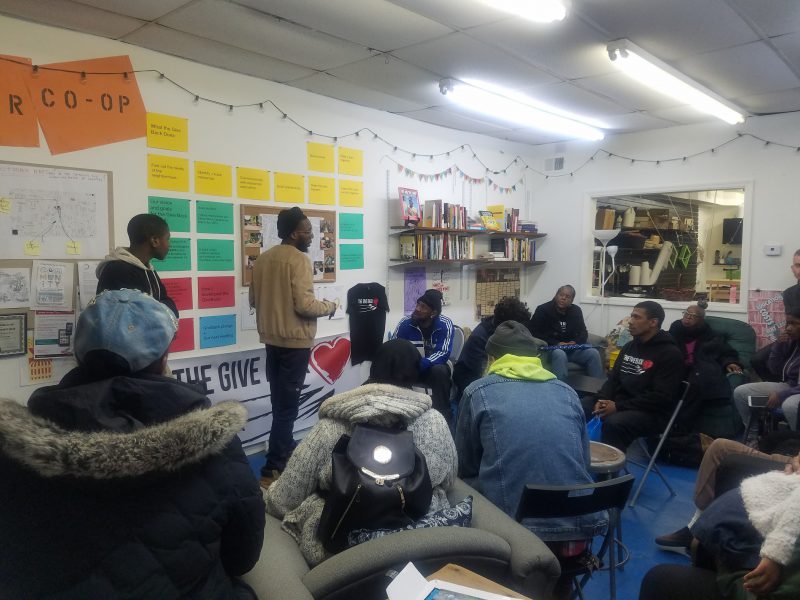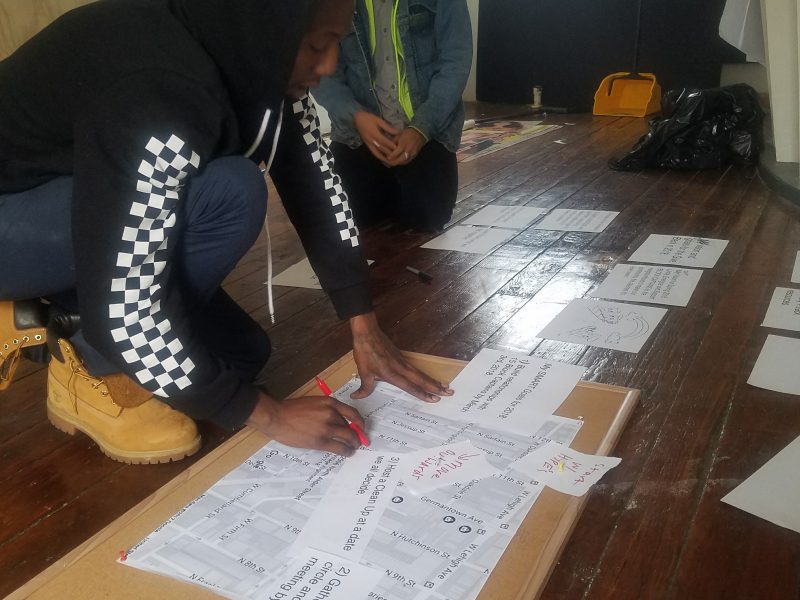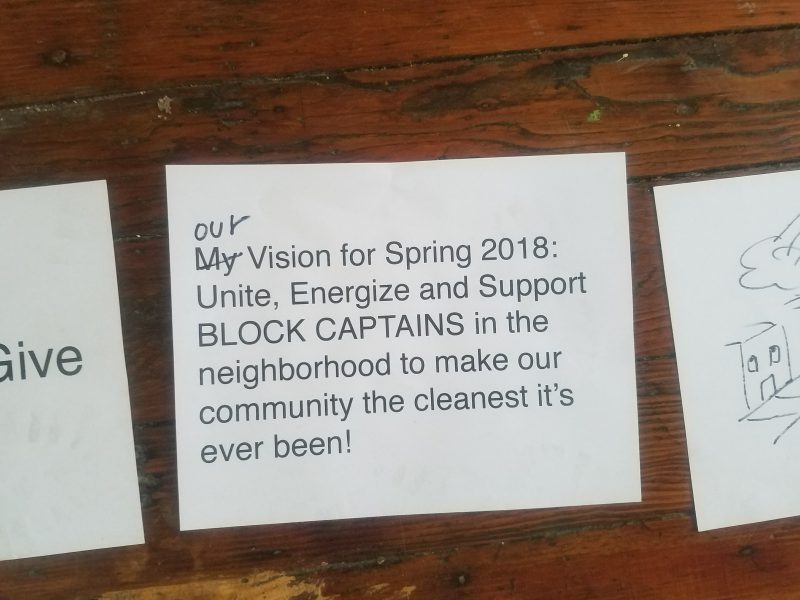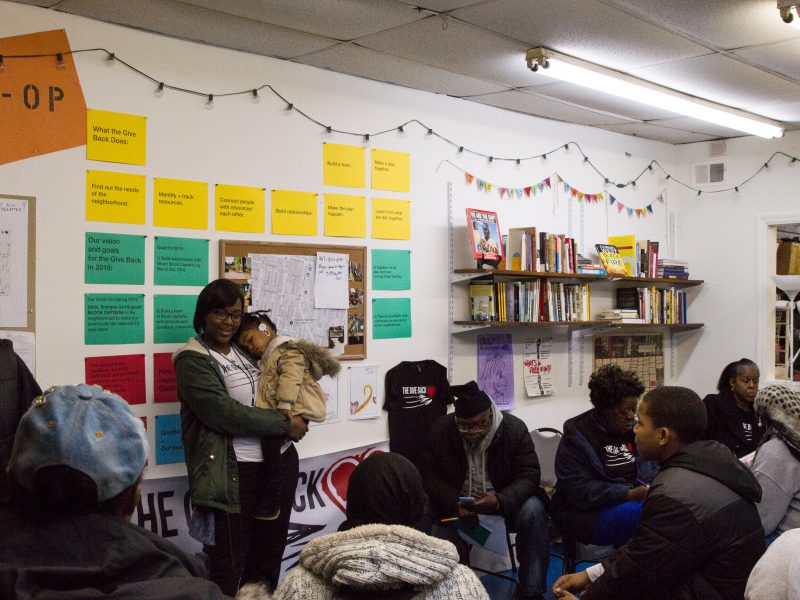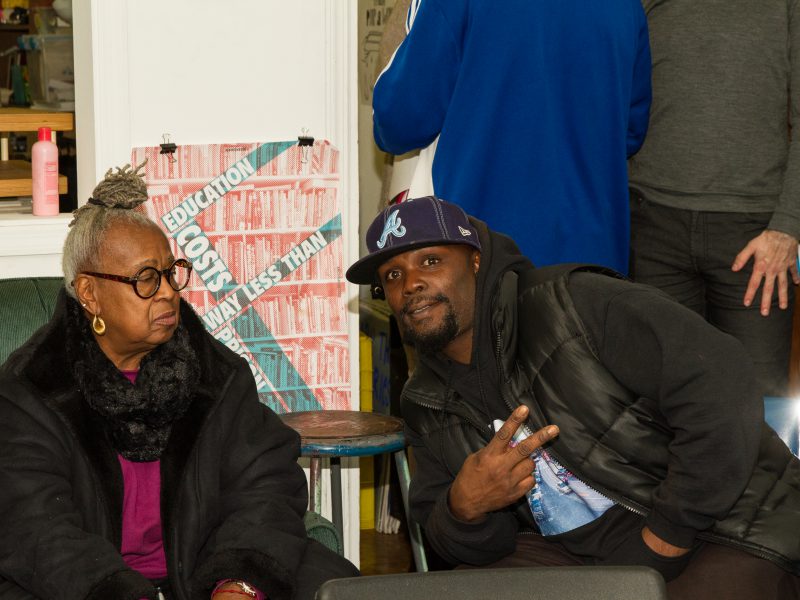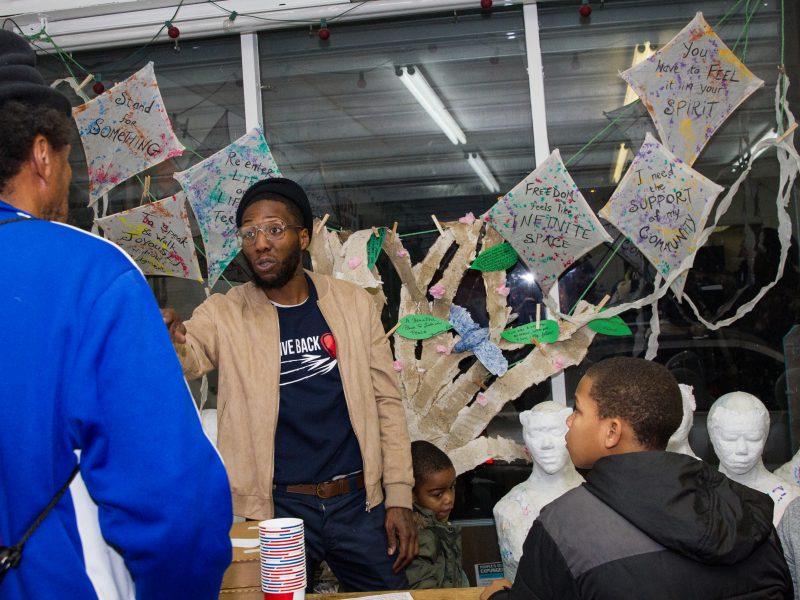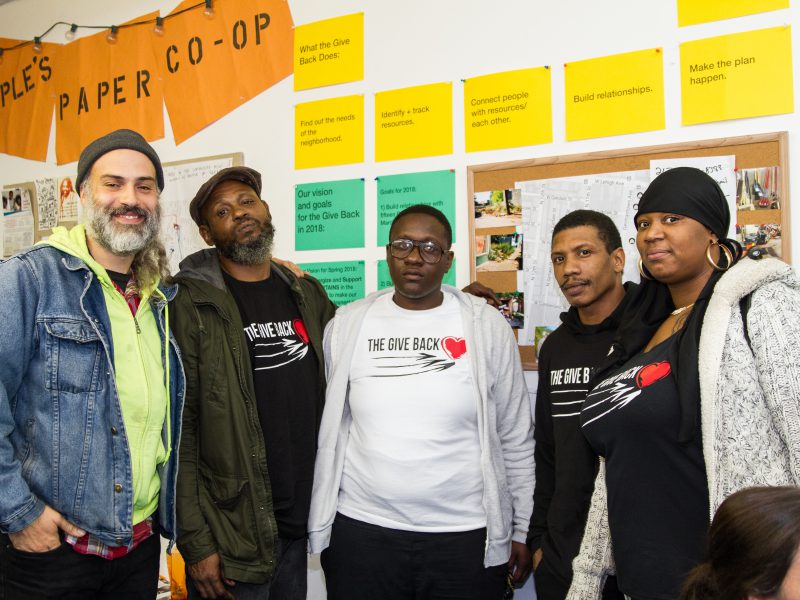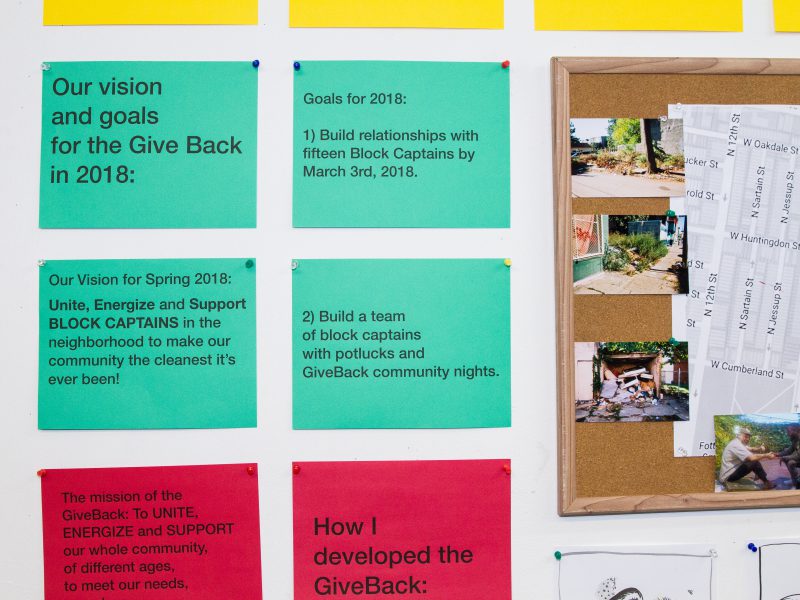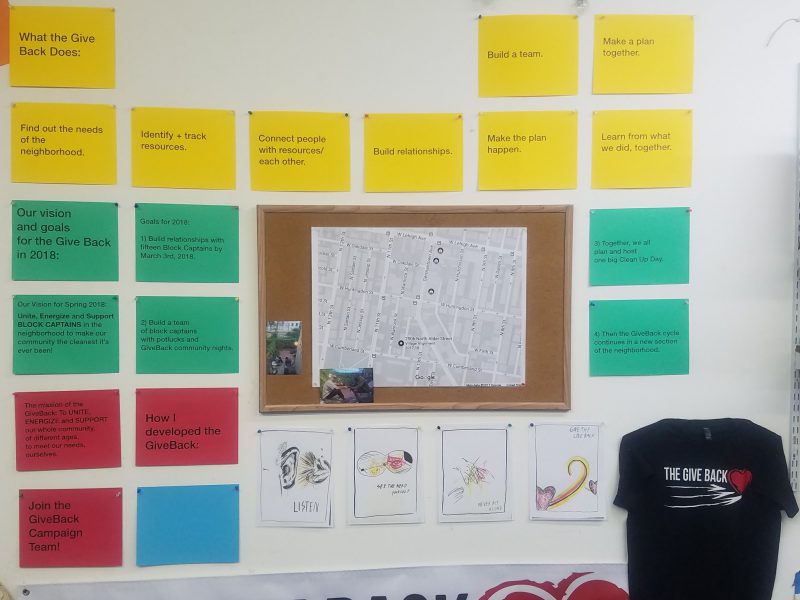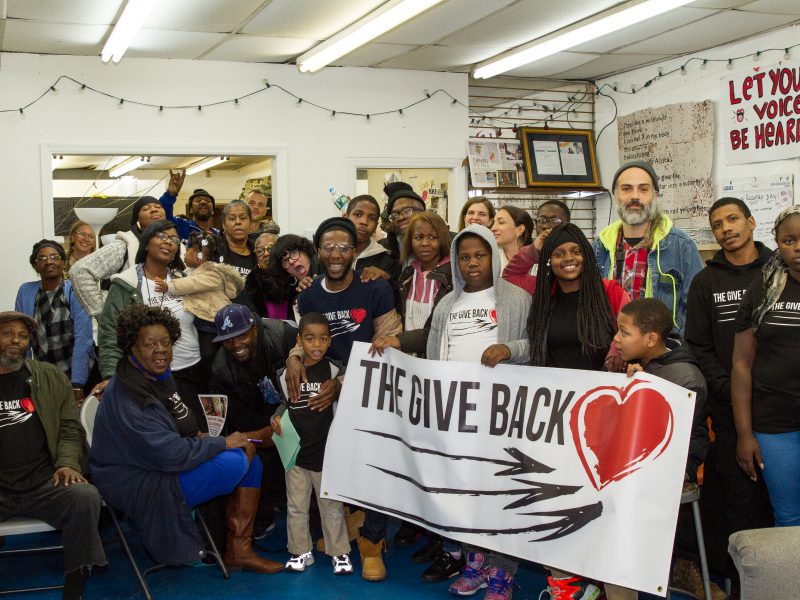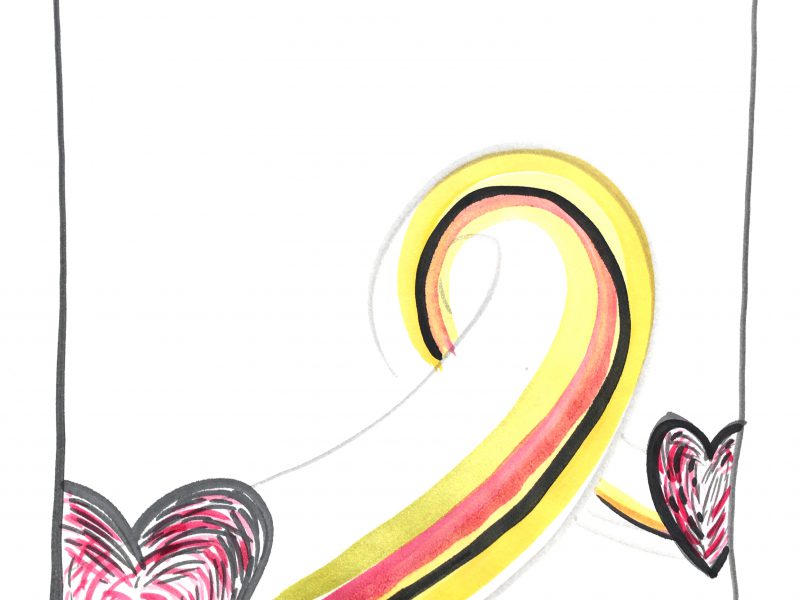“People deserve to make things they want to live with and to put them use in caring for each other.” — Ivan Illych
THE PEOPLE
Neighborhood Artist
Anthony Carr
Visiting Artist
Grimaldi Baez
Neighborhood Artist
Reggie Johnson
THE QUESTION:
Artist Grimaldi Baez worked with neighbors Stan Ward, Will Reid, Ant Carr, and Reggie Johnson to explore the question:
How do and can we use existing resources around us as tools to meet our needs?
The artist residency project and the house functioned as a “system zero” — a space to observe and imagine how neighbors use and create systems to meet their common needs. The goal of the residency was to creatively emerge tools and systems that could continuously meet the needs of the neighborhood artists and our community.
THE APPROACH:
Grimaldi sought to ensure that he and the neighborhood artists only built tools and systems that they really needed, wanted, fully understood and could use after the end of the residency. Ideally, he wanted the open nature of the project to reveal even more collaborators, needs, and solutions in the neighborhood.
Baez asked, “How do cumulative activities identify people who want to bring issues to the table, people who are in search of a set of a conditions to activate their own project?”
To this end, Grimaldi consciously pursued an “emergent strategy” approach to his project — centering the energy of and relationships between his collaborators, rather than a set end goal. You can read more about emergent strategy in project documentarian Ricky Yanas’ blog post here.
As a result, the residency evolved multiple times in unexpected ways, and, when a new collaborator emerged, was extended to follow the project through to completion.
THE PROJECT(S):
These evolutions can be divided into two major phases, The Workshop and The Giveback, with the second emerging from the conditions of the first.
Phase 1: The Workshop
In The Workshop, Grimaldi and his original group of neighborhood artists, Stan, Ant, and Will, researched tools at their disposal at The Village and found new ways to use them to meet their central need of dignified employment.
Phase 2: The Giveback
As this group came to the end of their planned time together, a new collaborator emerged. Reggie Johnson, a longtime Village student and community organizer, had been observing Grimaldi and the team. Through conversations with Grimaldi, Reggie saw resources — mentorship, materials, relationships — that he could use to increase his own impact as an organizer.
Reggie and Grimaldi undertook the same process, now refined through time, of identifying a shared concern (how to create a more connected and engaged community); naming Reggie’s existing “tools;” and adapting them to meet these needs. Through testing and adapting his “toolkit,” Reggie developed a campaign called The Giveback, strategically organizing neighbors to carry out a massive neighborhood-wide cleanup.
CONTINUITY:
Will, Stan and Ant all used the project as a springboard to employment opportunities around the city.
Reggie is currently employed by The Village as a community convener and organizer for an ongoing placemaking project at the basketball courts at 9th and Cumberland Streets. He is planning The Giveback cleanup for June 2018.
Grimaldi and Reggie are completing the Giveback Toolkit, a short list of principles and “tools” to use for all community efforts.
“A known and determinate beginning can end up producing unforeseen or unpredictable results.” -Richard Sennett
Phase 1: The Workshop
Ant, Grimaldi, Will and Stan confer in the backyard of the workshop space on Alder St.
Phase 1: THE WORKSHOP
Grimaldi Baez met group members Stan, Will, and Ant during their work together on the previous SPACES residency, Material Memory. Their conversations emerged a shared concern: how can they use the resources around them to make honest money, and to meet their needs with dignity?
Baez and the group agreed to apply “art thinking” — defined, for this project, as the freedom of connections that allows one to understand things better — to this concern, and to begin to see The Village and the neighborhood as a lab for interrogating this question.
Together, the group examined the tools at their disposal, and tested them through various tactics. By creatively adapting the tools to meet their needs, they found a variety of answers to their question by the end of their time together.
“…all skills, even the most abstract, begin as bodily practices; second, that technical understanding develops through the powers of imagination.”
-Richard Sennett
ART THINKING:
A freedom of connections that allows one to understand things better. A way of organizing and acquiring knowledge. -g.b.
TESTS & TACTICS
Once the group established their shared workspace and surveyed the tools at their disposal, Stan, Ant, Will and Grimaldi began tests to use their tools in the context of the neighborhood.
INGENUITY:
Problem solving within limited means, efficiency out of necessity. -g.b.
ADAPTATIONS
During their experiments, Stan, Ant, Will and Grimaldi repeatedly returned to their original concern of working with dignity. The group summarized it thusly: “How we make our money is the fundamental problem here. There aren’t enough jobs here, they’re minimum wage, and guys in the underground economy end up in jail, hurt, or turned around.”
Together they identified a shared obstacle to employment — the simple fact of how they felt they are perceived by the outside world. As young black men from a marginalized neighborhood in Philadelphia, they felt they were automatically dismissed from many employment opportunities.
So they developed a new question: how could they declare who they really are, to the neighborhood and beyond, using materials at hand? They gave themselves a challenge: make a message in 10 minutes, and for 10 dollars or less. Grimaldi and the team created a simple messaging kit with three ingredients: fabric, stencils, spray paint. The team also created a simple silhouette stenciling method (flashlight, wall, cardboard) to include portraits alongside words.
Then, they created vibrant self portraits and messages to capture their spirit in ways that felt true to themselves.
In doing so, they built a rapid-response sign-making kit that could be used for any neighborhood purpose. They made this kit available for community concerns. In one instance, the kit was used to make banners protesting the lack of affordable housing in Philadelphia by a local organizing coalition.
You can download the team’s instructions for how to use the stencil kit below.
CONTINUITY
The group ended its work together in October 2017 with an array of answers to its central question, “how can we use the tools around us to make a living with dignity?”
Relationships support employment
Out of all the tools in the workshop, the most important tool the group learned to use was relationship. Through connections made during the project, all three group members found — and learned tactics to keep — above-minimum-wage employment during the project.
Connected through clay
Village ceramics teacher Katia McGuirk taught the group tiling and masonry techniques to repair Village grounds. She was impressed by the group’s enthusiasm and offered all three of them the opportunity to assist her on large mural projects in 2017/18. The best part, for Grimaldi?
Working on work
“When Katia suggested they come work for her, the group considered her offer and said, “what’s the scope of work?” Grimaldi said. The group had learned a critical approach to evaluating opportunities, and had a place of support and reflection within which to do so.
Stan, Ant and Will practiced “work” itself in the workshop, and used the space to troubleshoot issues in their new employment. One of the group wanted to quit his job because understaffing left him doing the work of several people. The rest of the group encouraged him to stay, and suggested talking to his supervisor directly. As a result, he walked away with a promotion and increased pay.
The process of using ingenuity to solve challenges had built the group’s capacity to meet work of any kind with a sense of their own creativity and worth — backed up by the respect and care of the collective.
PHASE 2: THE GIVE BACK
You plan, you act, and you love. – Reggie Johnson
In Phase 2, a new collaborator emerged: neighbor Reggie Johnson, with a community-wide need in mind. Reggie is a skilled and trusted convener in the neighborhood who, since a teenager, has helped to plan and run basketball leagues, dance crews, and throw and promote parties. Now Reggie is using his gifts to build the civic and political power of our community.
Together, Reggie and Grimaldi articulated a question: How can we build a more engaged and connected community, capable of meeting its own needs through civic and political power?
The goal of this phase was to develop neighbors’ capacity to act, collectively, on their own behalf. One of Grimaldi’s overarching concerns was that his and The Village’s support did not undercut Reggie’s belief in his own power, but rather, helped Reggie solidify his own practice and networks as an independent activist in ways that would continue beyond the project.
Therefore, Grimaldi continued his emergent approach from Phase 1. Reggie initiated each aspect of their work together based on his existing skill set. Through System Zero, Reggie articulated his “tool kit,” practiced and refined a simple methodology for using these tools in order, and ultimately, designed The Give Back campaign — a tool for getting things done, together — for the spring of 2018, to further test and expand his abilities as an organizer and the community’s capacity to work together.
The Give Back has 4 steps:
- Find out what’s needed
- Identify and access resources
- Bring people and resources together
- Build a team
The story below shares the project’s journey, and the Give Back methodology, in Reggie’s own words.
THE GIVE BACK, STEP 1: FIND OUT WHAT’S NEEDED
“Before we started working, we decided we needed to see what people really want — what was their biggest worry. Grimaldi knew I’m connected with everybody around here. So he said, let’s go do what you to do, talk to people — and do a survey.
So I showed him what I do. He saw me knock on people’s doors, and how people came up to me with a smile. Grimaldi made some suggestions about how to ask questions, and to take notes on my phone for later.
Once we surveyed the neighborhood, the biggest thing we heard was clean lots, clean blocks. That was the biggest thing.
Then we went to [Reggie’s friend and neighbor] Hype, because he’s always cleaning up, giving back to the community. He and Grimaldi instantly clicked too. After about an hour of conversation, talking about how we want to do something — Hype said, we’re gonna call it the Give Back. We figure out how to get people what they need.”
THE GIVE BACK, STEP 2: IDENTIFY AND TRACK RESOURCES
“Hype wanted action. But the lot he wanted to clean was really dirty, old beds, big trees. It was too much work for just us. We would have needed a dumpster and people to come pick it up.
I also wanted this lot to remain clean when it becomes clean. I decided to help him figure out how to get the resources he needed for the long term.
First, we asked [Village Community Economic Development Director] Maggie and [Village Corridor Cleaning Manager] Shaheed what we should do to do help Hype.
Shaheed showed us how to call 311 and find out who owns the lot. Maggie showed us where the City’s cleaning supply warehouse was. We decided to go there in person to see for ourselves how it ran. I didn’t believe we could get all these supplies for free!
I recorded these resources for later. All of this is the Give Back.
Grimaldi introduced me to Michelle Feldman of Keep Philadelphia Beautiful. She told me about all the cleaning programs she knows about, and she said, “I could even come out to you, Reggie!” I said, that could be great, maybe 5 or 10 people! She said, “Ok, I’ll prepare for a small crowd.””
THE GIVE BACK, STEP 3: CONNECT PEOPLE WITH RESOURCES AND EACH OTHER
“NOW I went back to Hype, and I told him, this is a huge step! We don’t have to do this all by ourselves. And we have a meeting with Michelle to spread all the info.
I have experience promoting events and getting people together. I got a logo made by my partner Wayne Mugga, who does my party promotion with me. I drew it out for him. The Give Back is really about promoting love. I practice for myself, I walk around and I give you love first. Even the meanest people I give them love, trying to fix love in their hearts.
When I got the fliers, I started inviting people I wanted to know about that resource. I took the flier to them, and explained it to them. I see the ones that clean up a lot, I even went to the drunks that clean the avenue, the store owners that clean the avenue. Not just neighbors, all kinds. That’s what makes it easy for me. I narrowed down a category and that’s the people I invited, as well as my closest colleagues. Aunt Diane, Aunt Eleanor.
I didn’t expect for the meeting to turn out the way it did. But everyone I invited brought people with them. We’d talked about it for years and they saw it coming together.”
THE GIVE BACK, STEP 4: BUILD A TEAM, MAKE A PLAN
Reggie uses listening, trust, space, and reflection time to build a team, and make a bold plan.
Reggie uses listening, trust, space, and reflection time to build a team, and make a bold plan.
Reggie uses listening, trust, space, and reflection time to build a team, and make a bold plan.
“The group made a message very specific to me. The message was: you plan, you act. They let me know that they believe in me and whatever I got going on and they’re going to help me, but when you plan, you act, and you love. They say, “We know you’re going to get somewhere, so don’t change on us.”
Now I’m going to campaign to unite, energize, and support block captains together to make Spring 2018 the cleanest this neighborhood has ever been. The block captains are the one that care the most. They’re a good investment of social capital. It’s easier to work with them because they already are in the field of cleaning and they know how to organize.”


